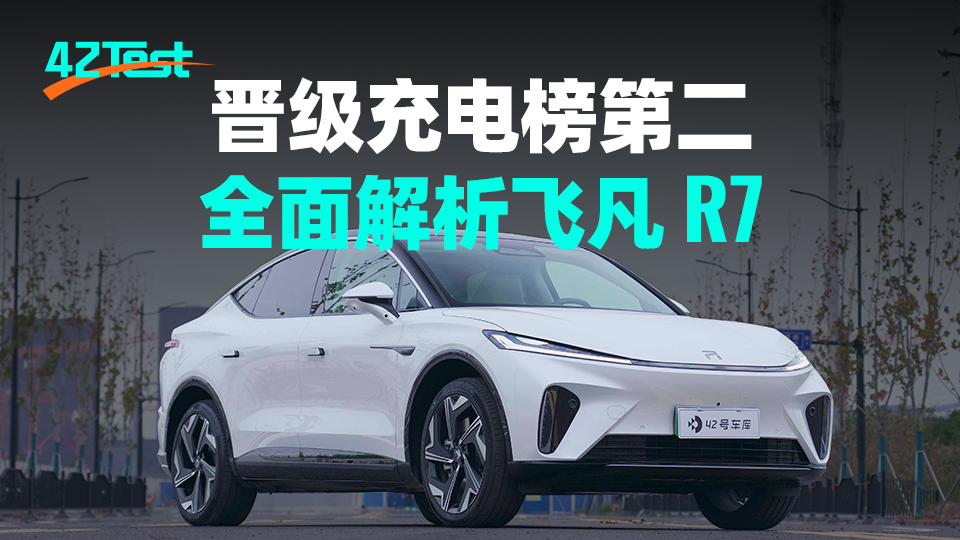In the delivery volume statistics at the beginning of this month, the Feeyo R7 achieved a first-month delivery volume of 1,501 units. Although the number 1,501 may not seem impressive, it is considered commendable for the Feeyo R7, which only gradually started delivering mid-month and was affected by capacity ramp-up and the epidemic.
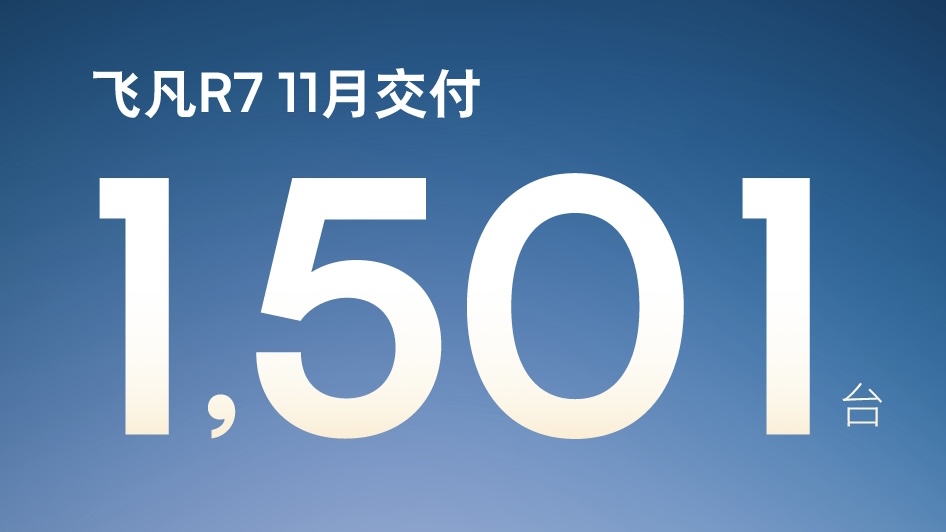
Among the first batch of 1,501 Feeyo R7 deliveries, the average order amount exceeded RMB 320,000, which means that most customers chose the Long-Range Rear-Wheel-Drive version and the All-Wheel-Drive version, also known as the extended-range high-end and performance high-end versions. Currently, there are four versions of the Feeyo R7 for sale, with subsidized prices ranging from RMB 289,900 to RMB 356,900.

However, it can be seen from the configuration table that the differences between the first three configurations are only in the battery size and power. Features like the three-screen display, BOSE sound system, panoramic camera, and basic driving aids are all standard. If you do not pursue extreme range and power, the standard high-end version is already luxurious enough for an entry-level buyer. The top version only adds more optional packages on the performance high-end version.
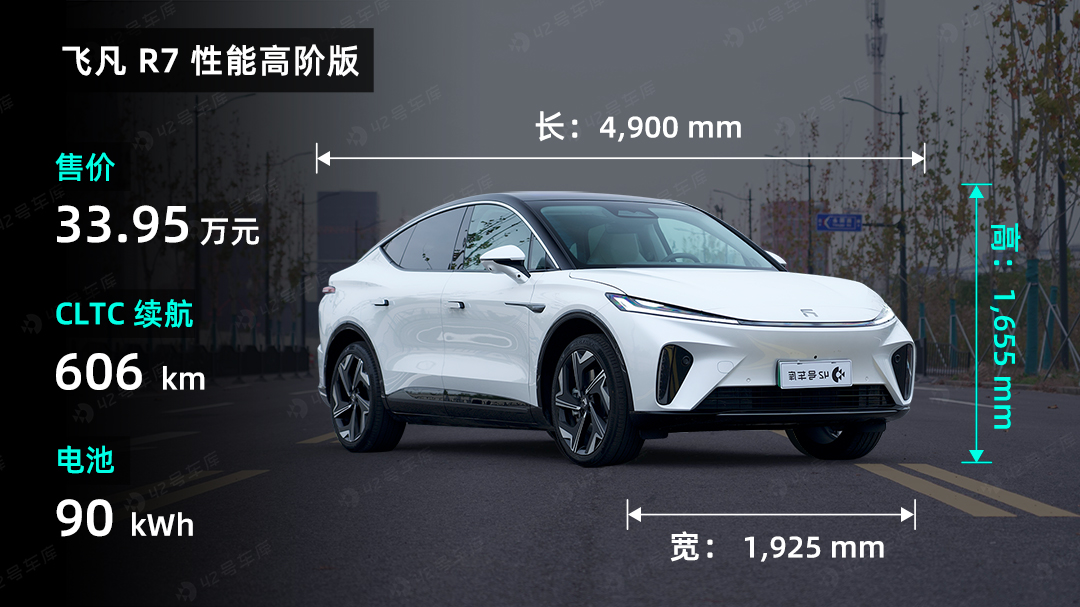
According to the official introduction, the Performance High-End version, which starts at RMB 326,900, is the most popular. At a price of around 300,000 RMB, it features a large 90 kWh battery and acceleration of 3.8 seconds, with a High-End Advanced Driving Assistance Software Package worth 30,000 RMB as a bonus for orders placed within the year. Today we happen to have a Feeyo R7 Performance High-End version, in which we will show you the strength of the most popular version of Feeyo R7 through the exterior, cabin, driving, and range aspects.
Exterior: A Recognizable Sloping SUV
For the Feeyo R7 Performance High-End version we received, the paintwork is a bi-color combination of Cloud White and 21-inch Xingyu rims, a personally preferred color scheme that accentuates the curves and lines of the Feeyo R7’s body.
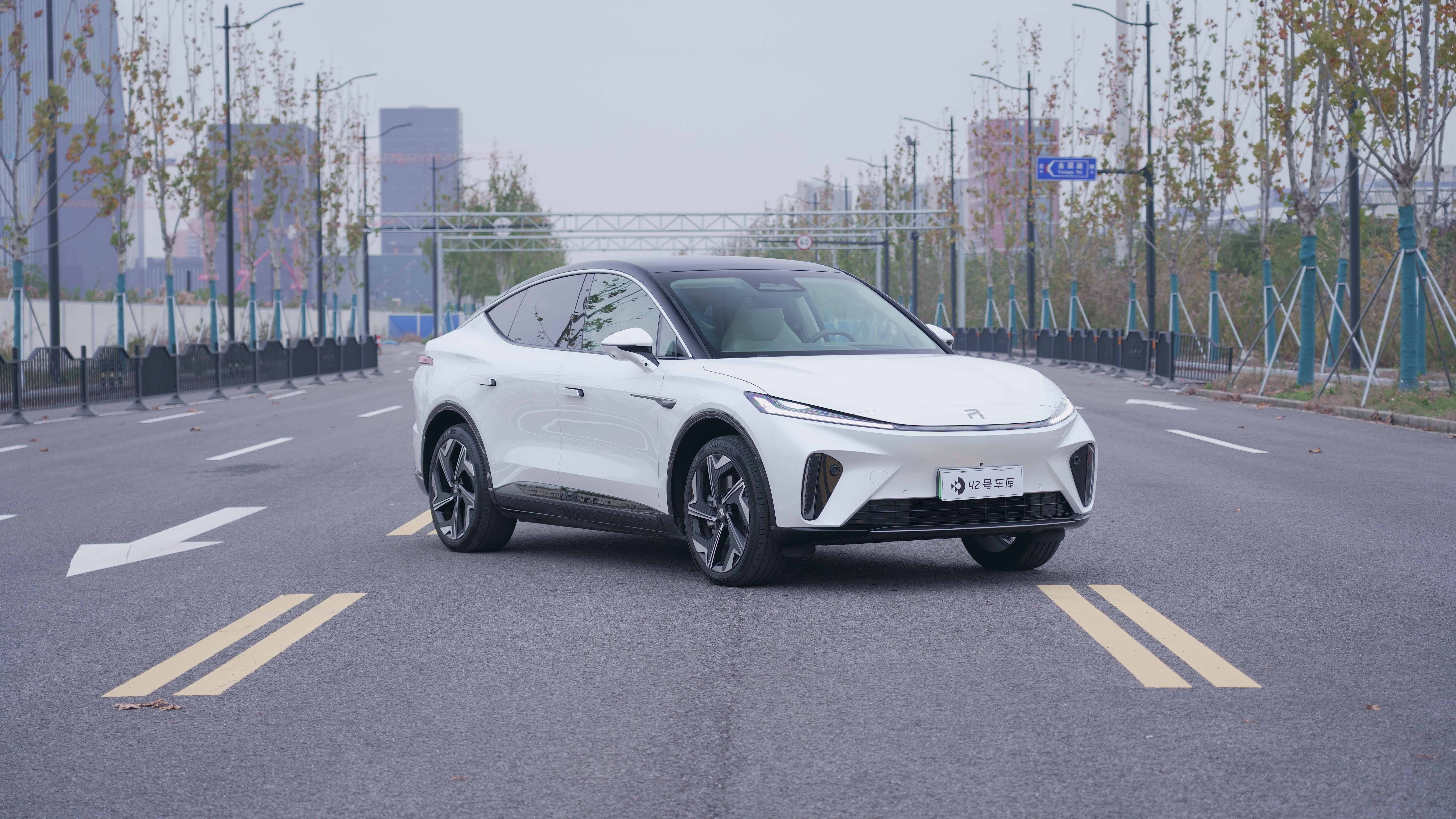
The front of the RisingAuto R7 adopts the popular design of split headlights and a closed front grille, which makes it easy to recognize it as a new energy vehicle even without a license plate.
When viewed from the front, the RisingAuto R7’s front wheels are slightly inward, and increasing the outward angle would improve the visual effect.
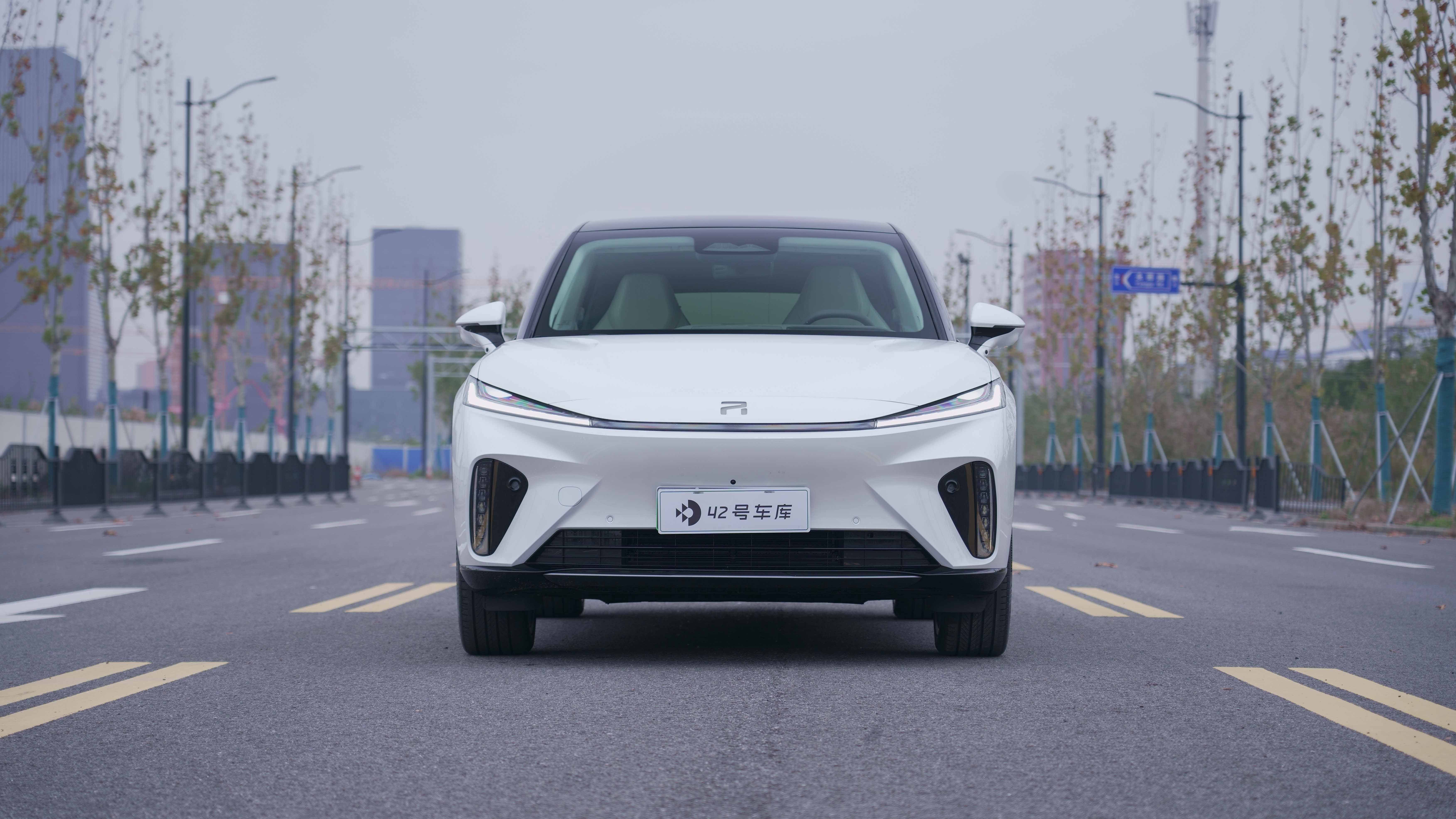
In the increasingly homogeneous design landscape, RisingAuto R7 has put some effort into increasing the vehicle’s recognition. For example, the daytime running light design includes not just a plain light strip, but also an inverted trapezoid pattern located above it. This small illuminated area adds a lot to the appearance of the RisingAuto R7.
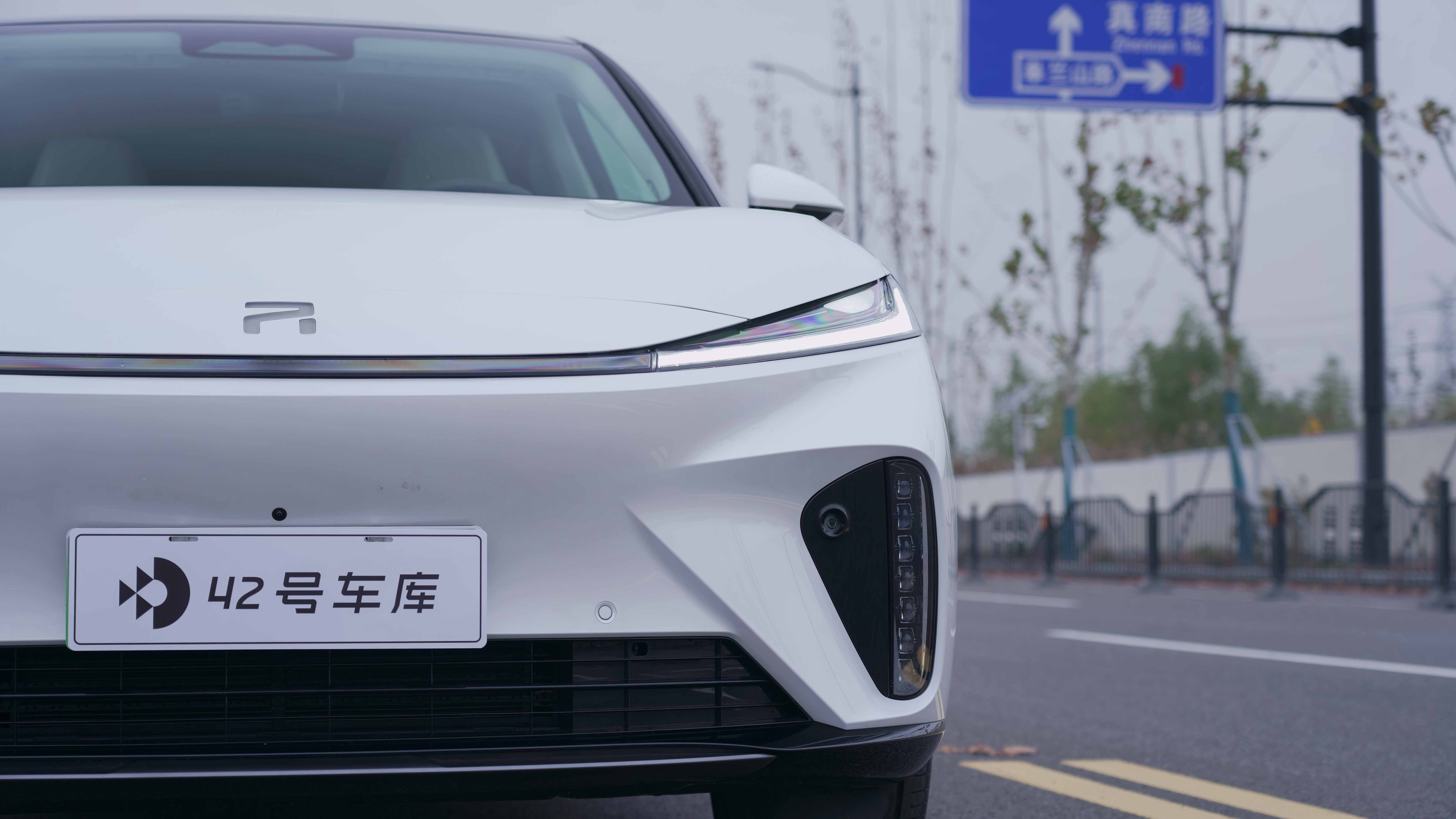
Below the front bumper is the RisingAuto R7’s air intake grille. The high-end version equipped with a 90 kWh battery pack also includes an AGS active air intake grille, which can improve the thermal management of the electric vehicle to a certain extent. This is especially helpful for improving winter range.
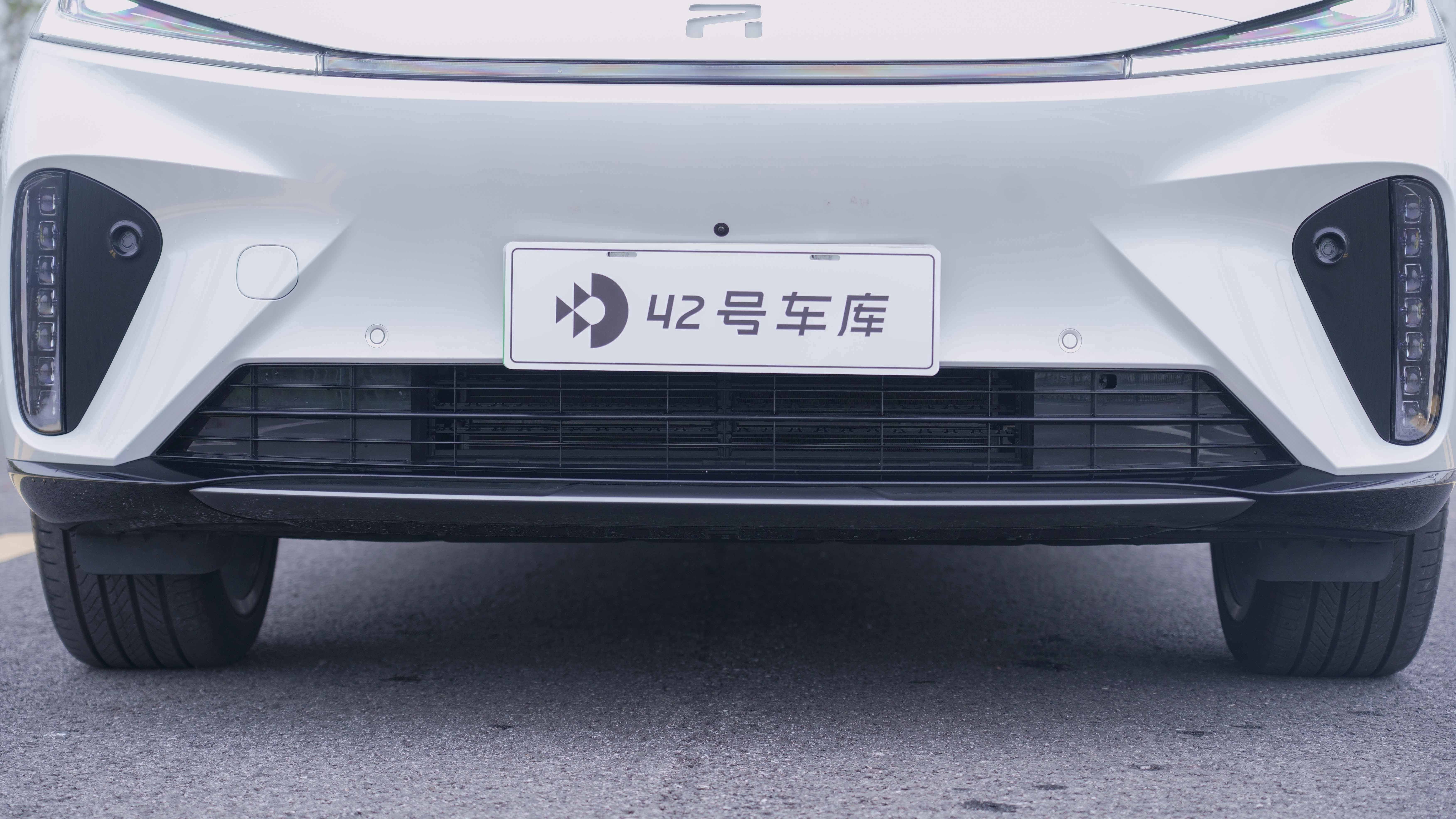
Looking at the side of the vehicle, the RisingAuto R7’s body lines are very smooth. The roofline slopes gently downward starting from the B pillar, and the up and down waistlines on the body also help to lower the vehicle’s side visual center of gravity. The 21-inch wheels give the R7 a poised and ready-to-go look.
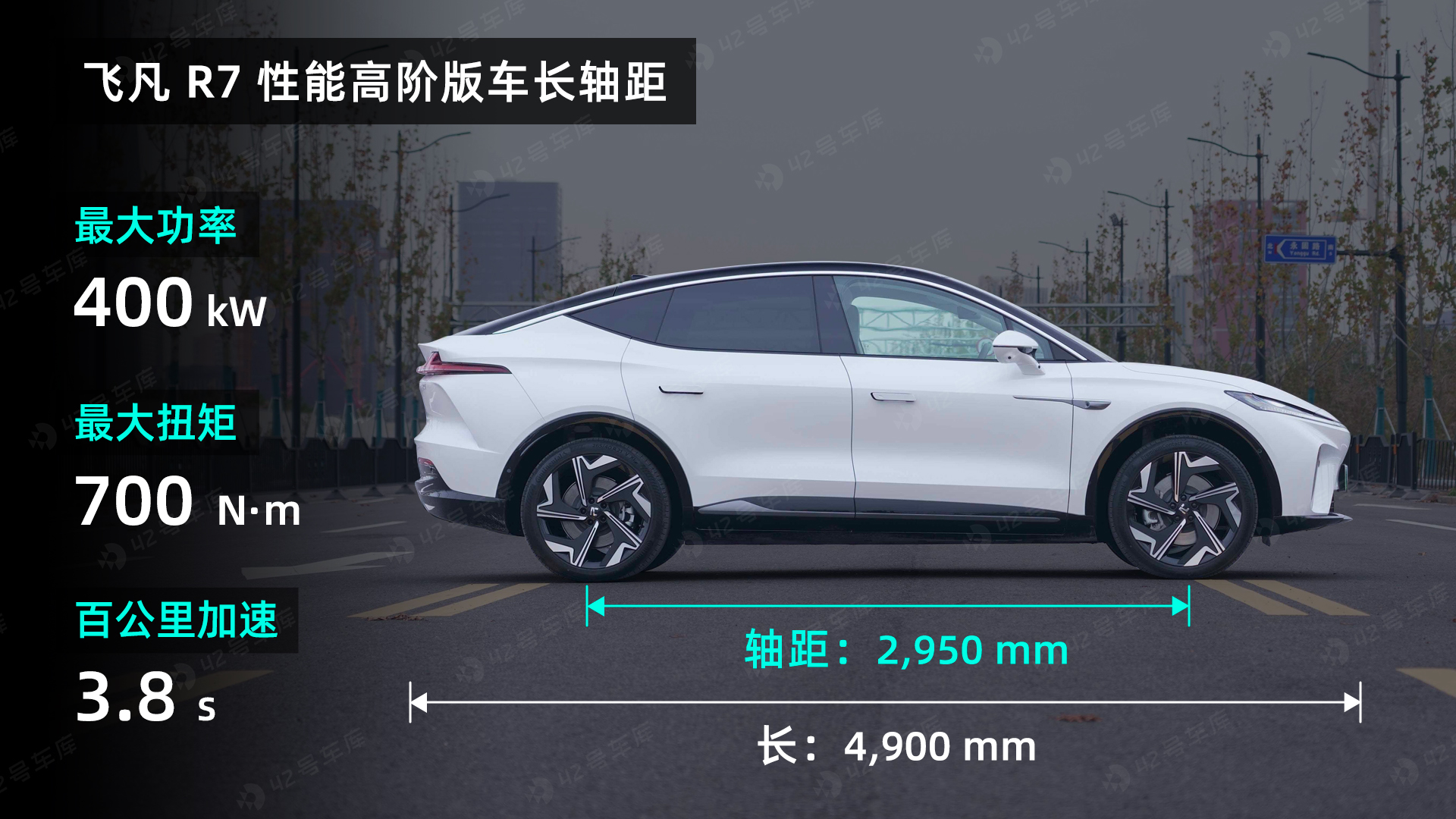
The symmetrical waistlines at the front and rear wheel arches are the icing on the cake of the entire vehicle’s appearance. The small and wide design gives the vehicle a strong and powerful sense.
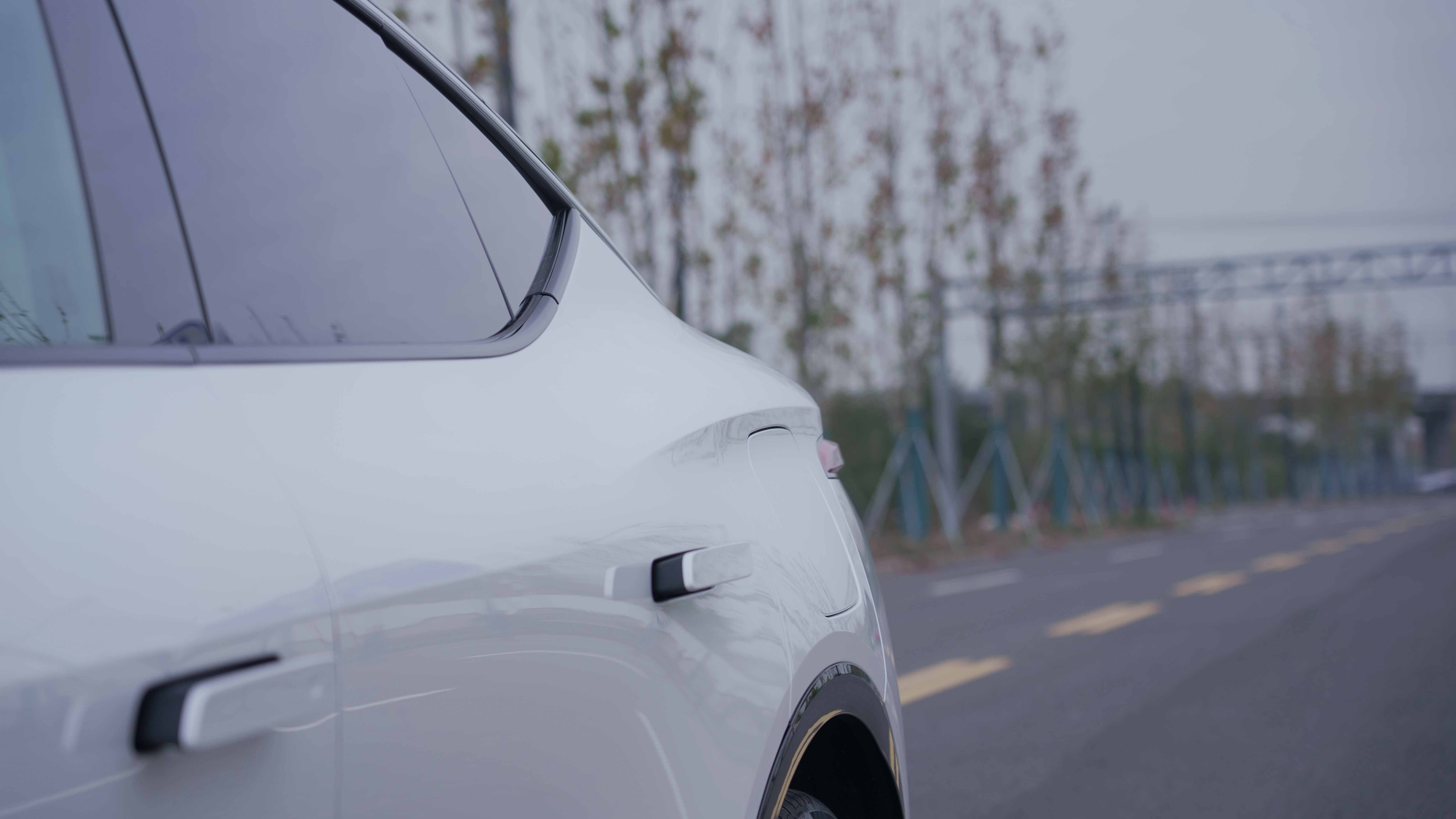
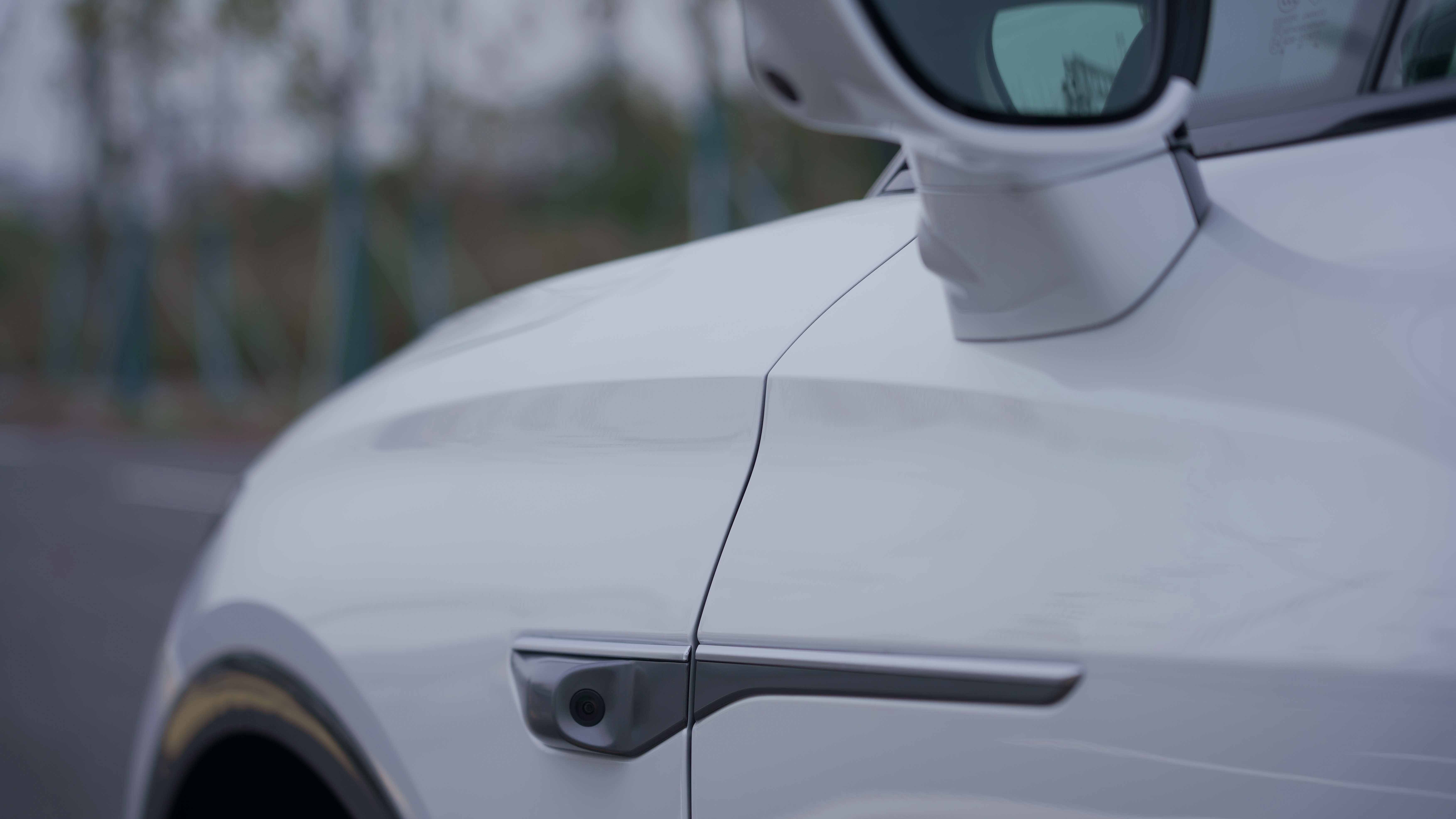 The smooth yet tense lines of the RisingAuto R7 contribute to its drag coefficient of 0.238, which is quite impressive for a large SUV with a sloping back. The NIO EC6, also with a sloping back, has a drag coefficient of 0.26, while the ET5 sedan from NIO has a drag coefficient of 0.24. The sleek design of the R7 is responsible for this achievement and is also expected to improve its range during high-speed driving.
The smooth yet tense lines of the RisingAuto R7 contribute to its drag coefficient of 0.238, which is quite impressive for a large SUV with a sloping back. The NIO EC6, also with a sloping back, has a drag coefficient of 0.26, while the ET5 sedan from NIO has a drag coefficient of 0.24. The sleek design of the R7 is responsible for this achievement and is also expected to improve its range during high-speed driving.
SUVs with a sloping back often sacrifice some headroom for the sake of style, and I have some reservations about the rear passenger space of the RisingAuto R7, which I will test later.
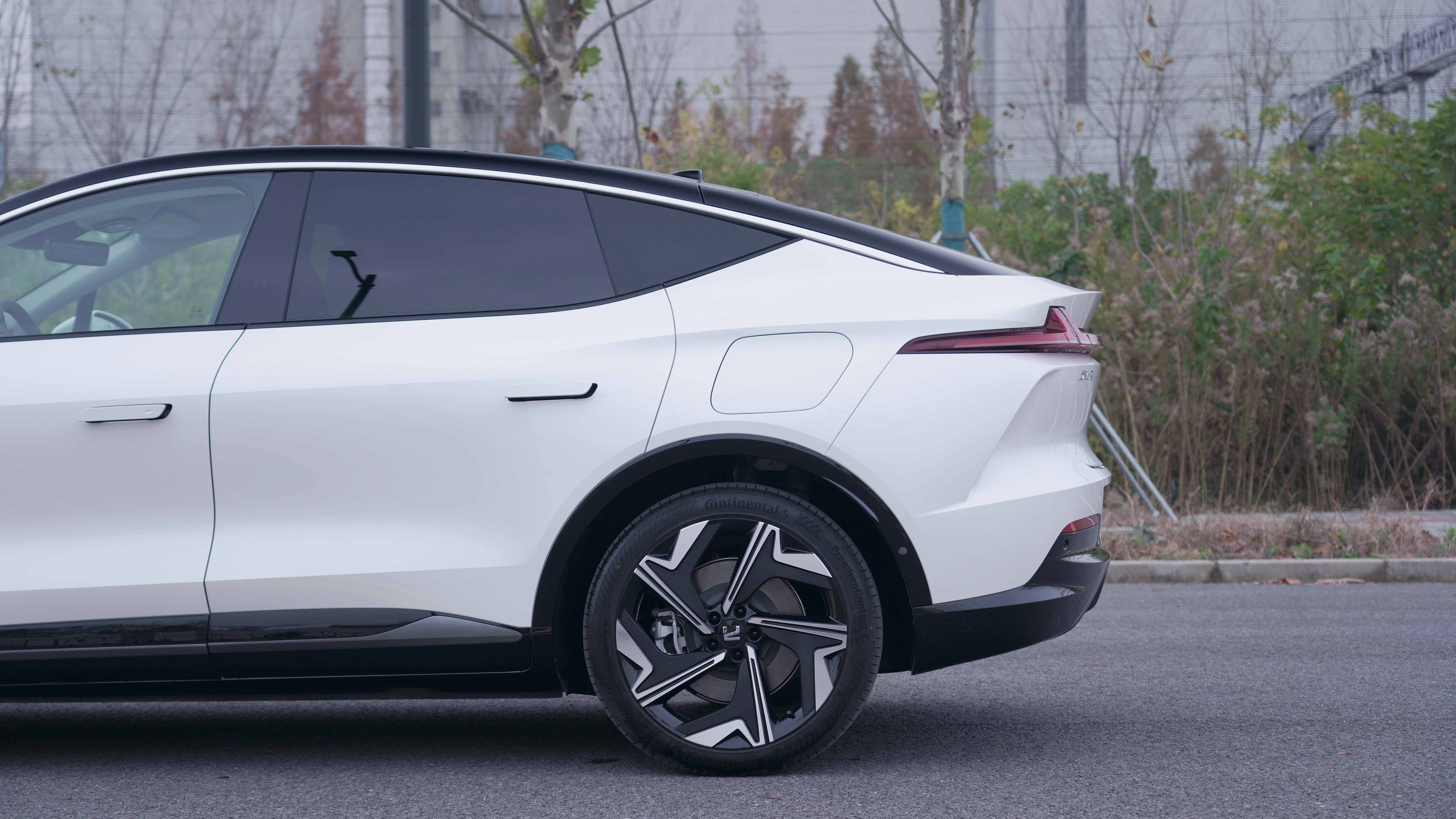
On the wheel side, the RisingAuto R7 Performance Advanced Edition is equipped with 21-inch Xingyu wheels, which look visually impressive.
As the RisingAuto R7 Performance Advanced Edition is an SUV that leans more towards rear-wheel drive, with a front motor power of 150 kW and a rear motor power of 250 kW, the tires used are of specifications 235/45 R21 for the front and 265/40 R21 for the rear, which look very sporty. However, this tire size is not cheap, with prices typically ranging from 2,000 to 3,000 yuan per tire.
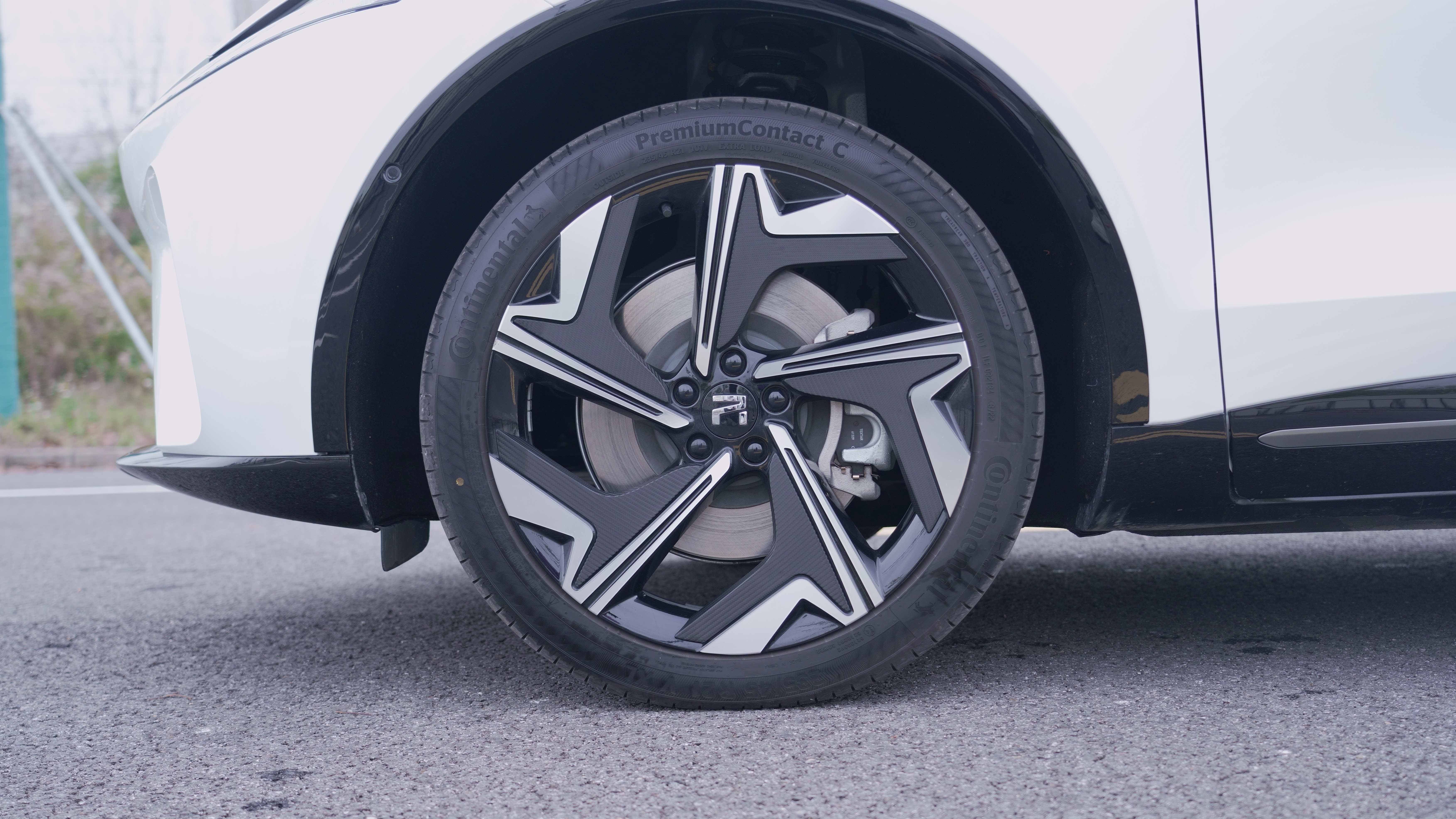
The RisingAuto R7 comes with Continental PremiumContact silent tires. In addition, all four doors are made of double-layer laminated glass, resulting in good NVH performance among vehicles in the same class. However, at speeds of up to 120 km/h, some wind noise can still be heard near the A-pillar. Fortunately, the noise is not loud.
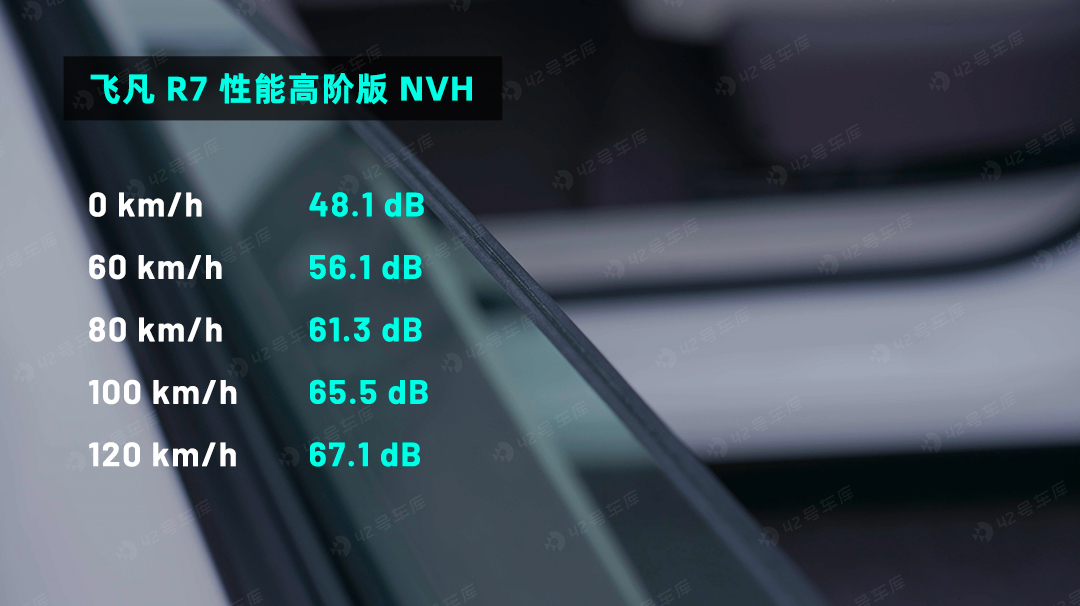
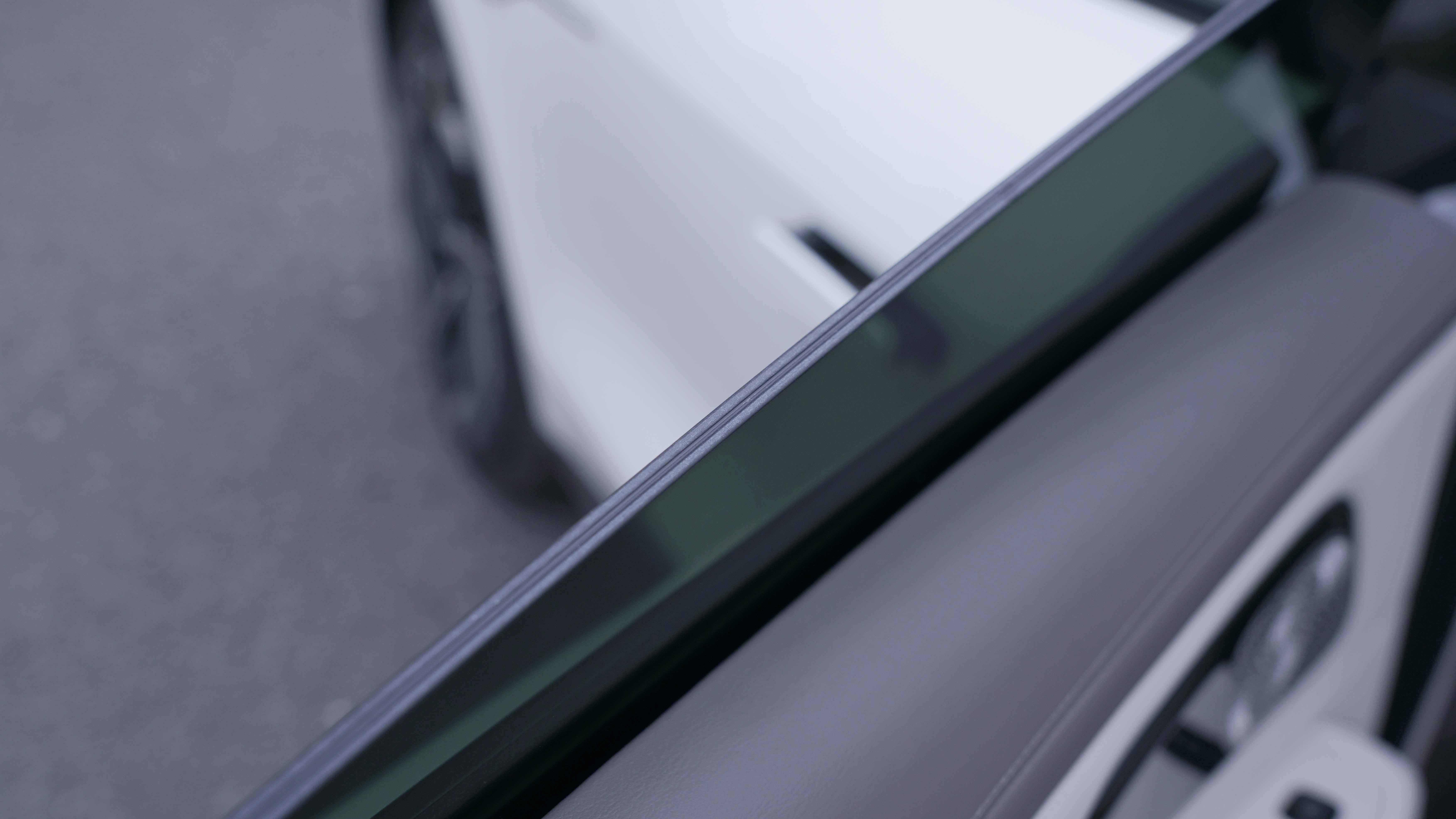
In addition, the RisingAuto R7 is one of the few models in the same class to offer electrically operated doors that automatically open when the handle is pulled and close when the brake is applied when boarding the car. The process is very smooth. However, electric doors have been criticized for their unreliability and accidents, whether it’s the Tesla Model X or the Jinkou 001. Nevertheless, the convenience brought by automatic doors is irreplaceable by manual doors.
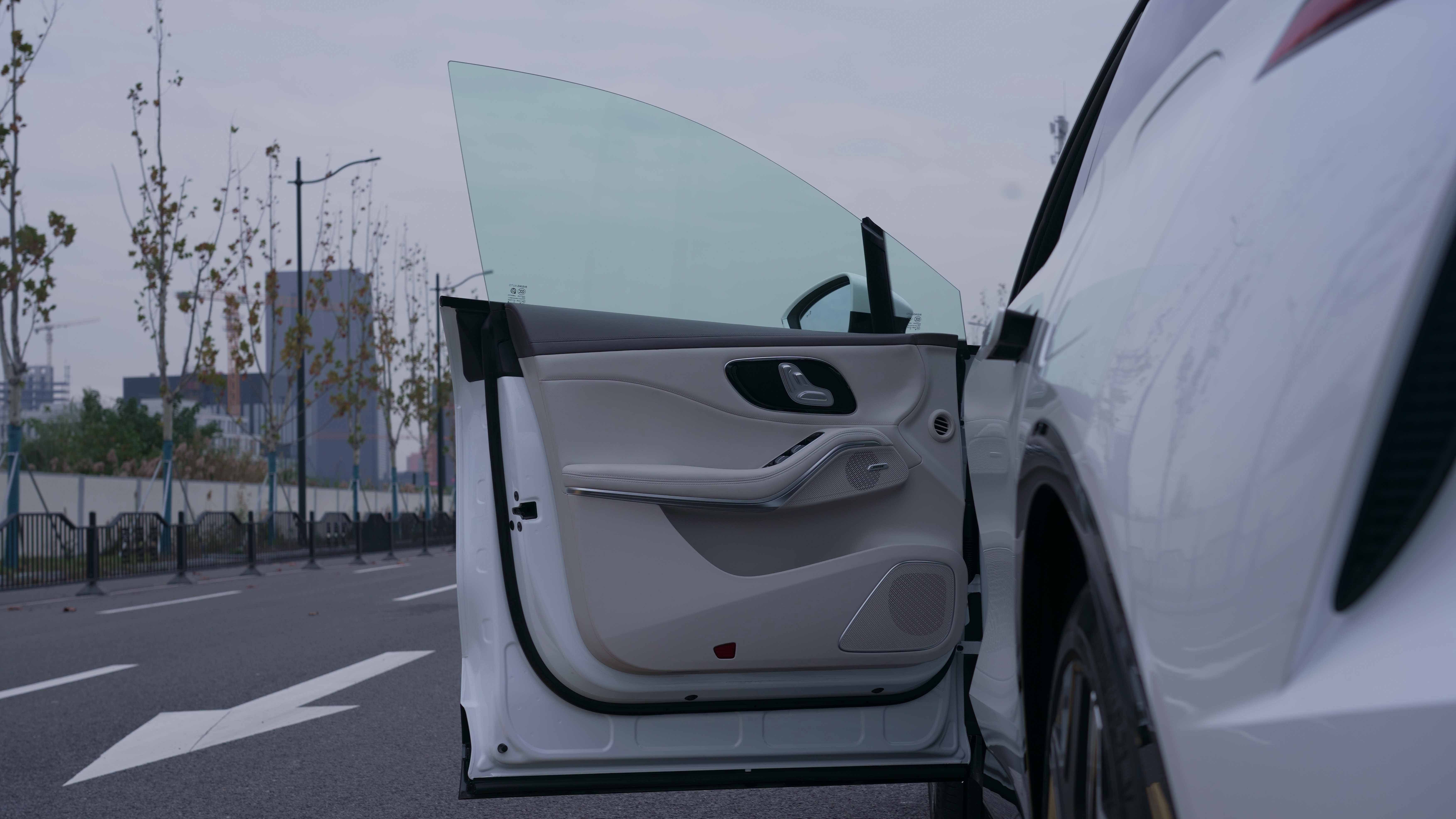
At a 45-degree angle at the back end of the Feibt R7, I believe it is the best-looking part of the car’s exterior. The rear looks very solid and muscular, with continuous taillights extending from the waistline and echoing in the position of the roof, adding recognizability while making the rear of the car very clear in layers. Additionally, the R7’s tail is not overly decorated, and the overall design is just right.
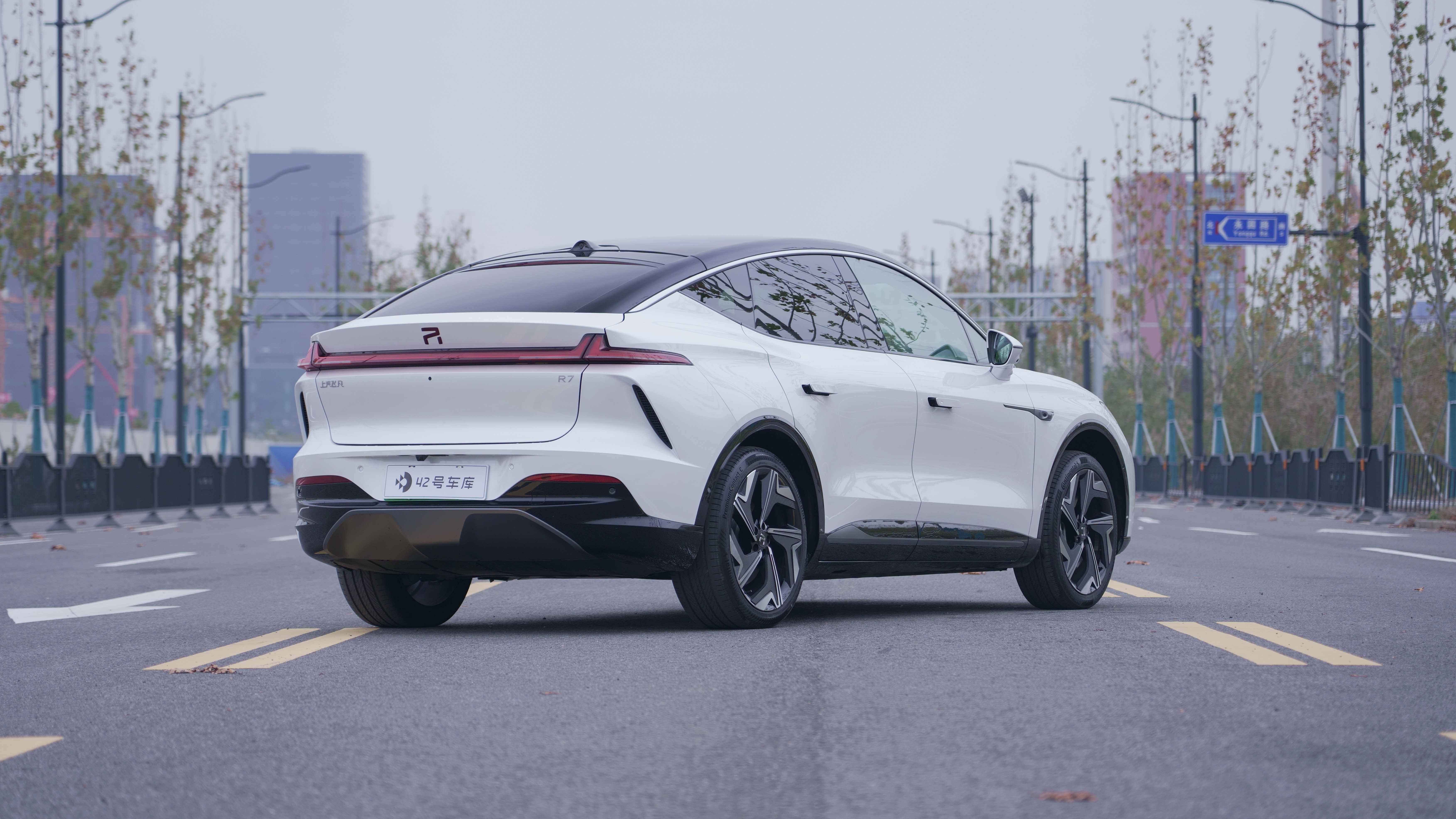
This is thanks to Martin Kropp, the designer of the first-generation Volkswagen CC. At that time, Martin Kropp, as the designer of the first-generation coupe CC, is still regarded as the most beautiful Volkswagen, so it is not surprising that the Feibt R7 also has very smooth lines.
After opening the trunk, the Feibt R7 also provides a very sizable trunk space of 491 L. If that’s not enough, folding down the rear seats can further expand it to 1,471 L. “When you go to IKEA on the weekends and buy a mattress, cabinet, and full-length mirror, and the scalper asks if you need to transport the goods, you can confidently tell him that one R7 is enough.”
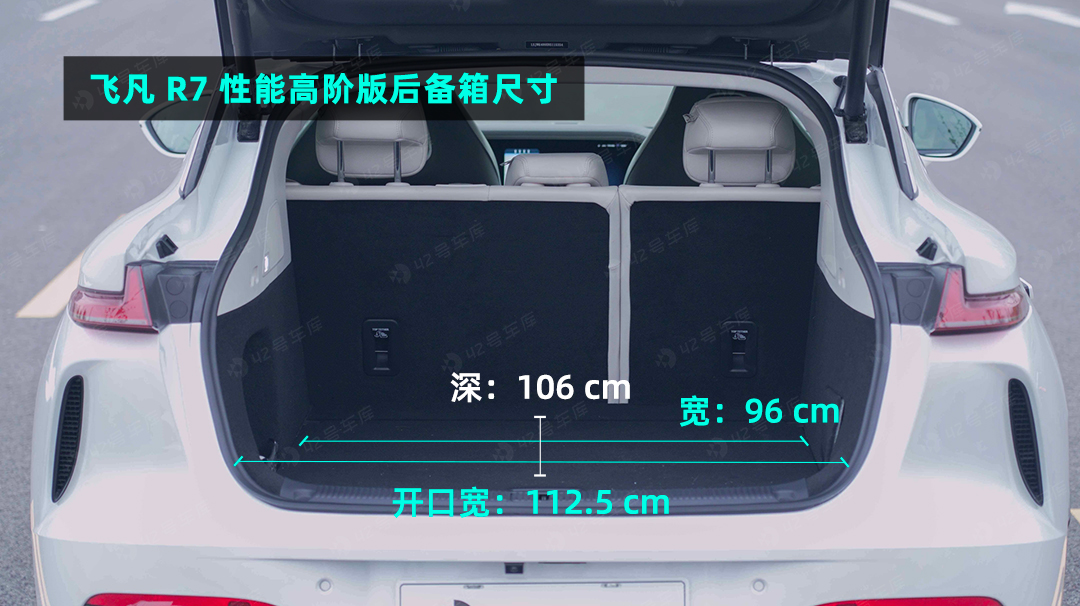
Overall, the Feibt R7 has a sporty appearance that is more in line with the aesthetic of young consumers in the same class of models, and compared with other products in the same price range, the Feibt R7 can provide consumers with more personalized choices. For young users now, in addition to appearance, they also value the practicality and versatility of vehicles. As a mid-to-large-sized pure electric SUV for young people, can the Feibt R7 continue to perform well?
Cabin: Solid Foundation
Intelligent Cabin
In recent years, with the increase in demand for “information display,” the size and number of car screens have continued to increase. From the original central control screen for navigation, LCD instruments for viewing vehicle information, central control screens for controlling the car, auxiliary screens for entertainment, and HUD for driving.When more and more car models are equipped with these screens, the user experience and functionality become the new direction of development. This is exactly what Fovan Automotive has done by installing the RISING MAX 3+1 giant screen on the R7 cabin. The first time I sat in the front row of the Fovan R7, I was immediately attracted by the 43-inch wide color screen.
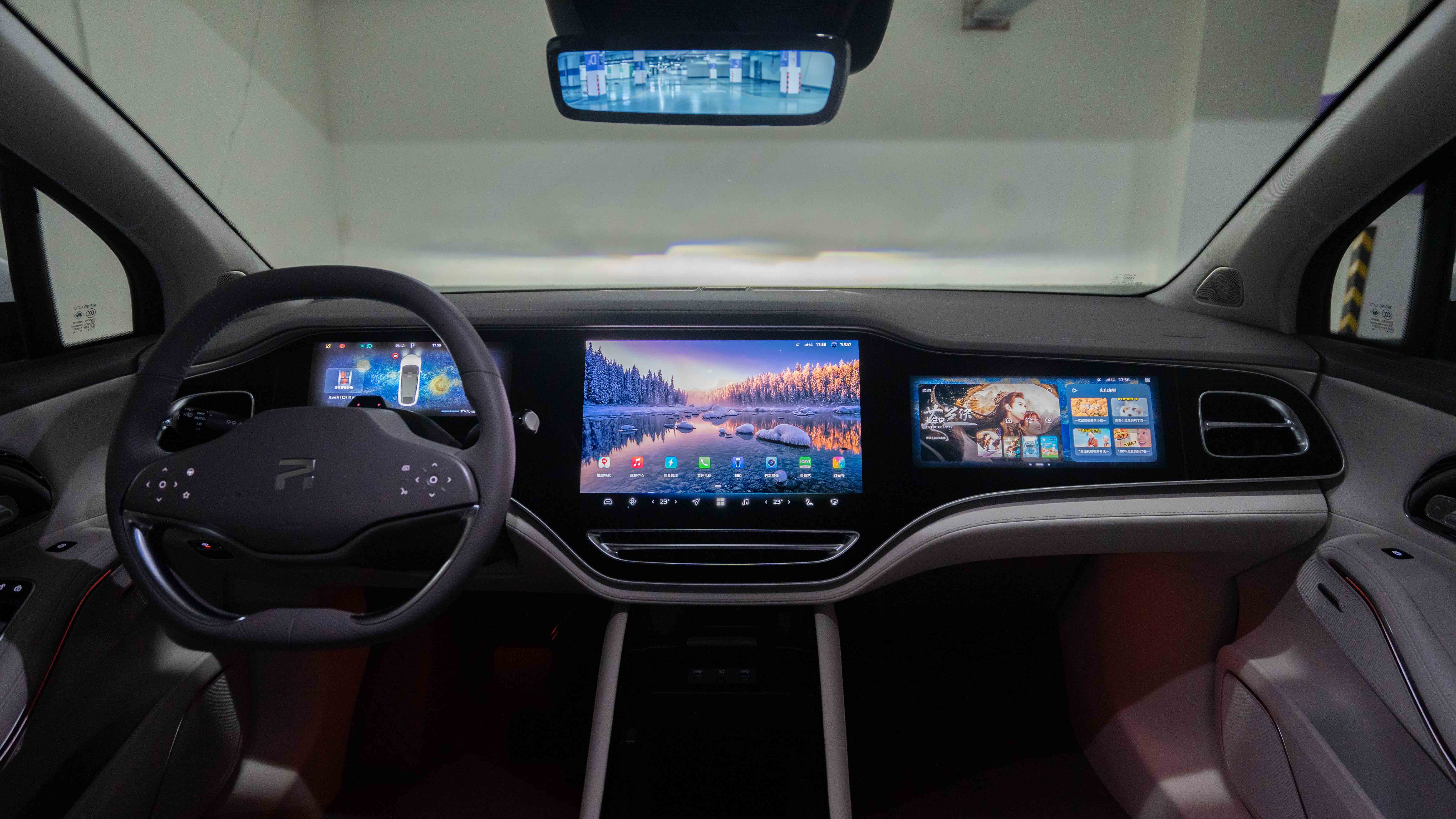
The LCD instrument panel in the driver’s position is a normal size of 10.25 inches, with a clear layout and logic, making it easy to use. What’s surprising is that the background wallpaper of the LCD dashboard can be replaced, and everyone can set it according to their own preferences. It’s not common in the market.
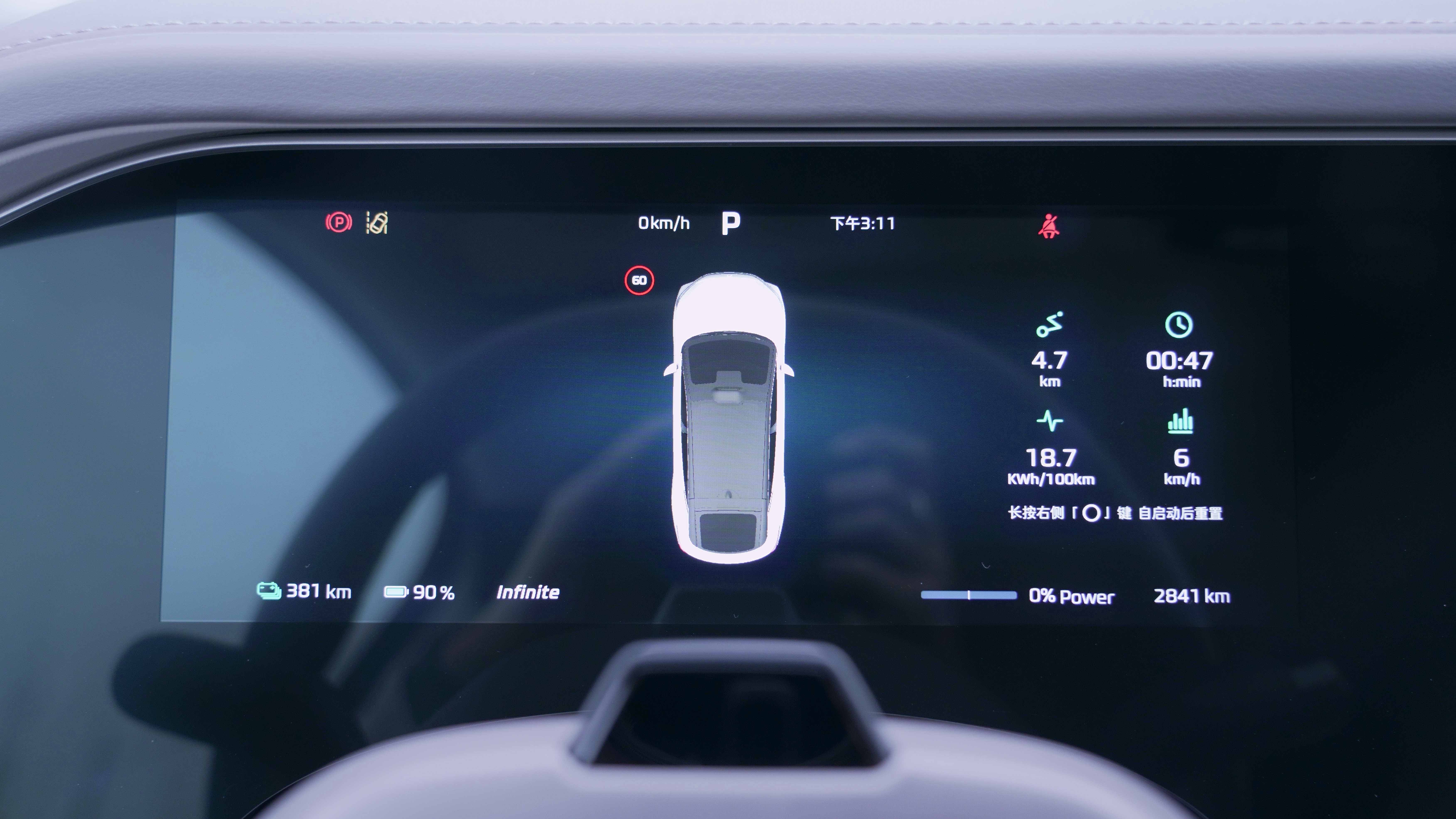
Fovan R7’s central control screen uses a 15.05-inch AMOLED screen with a resolution of up to 2.5K and a pixel density of 200 PPI. Whether it’s clarity, contrast, or display brightness, it’s impeccable. Nowadays, screen competition has moved from the smartphone market to the car industry. The screen is driven by the Qualcomm Snapdragon 8155 car chip, and with a 60 Hz refresh rate, the actual touch response is very smooth.
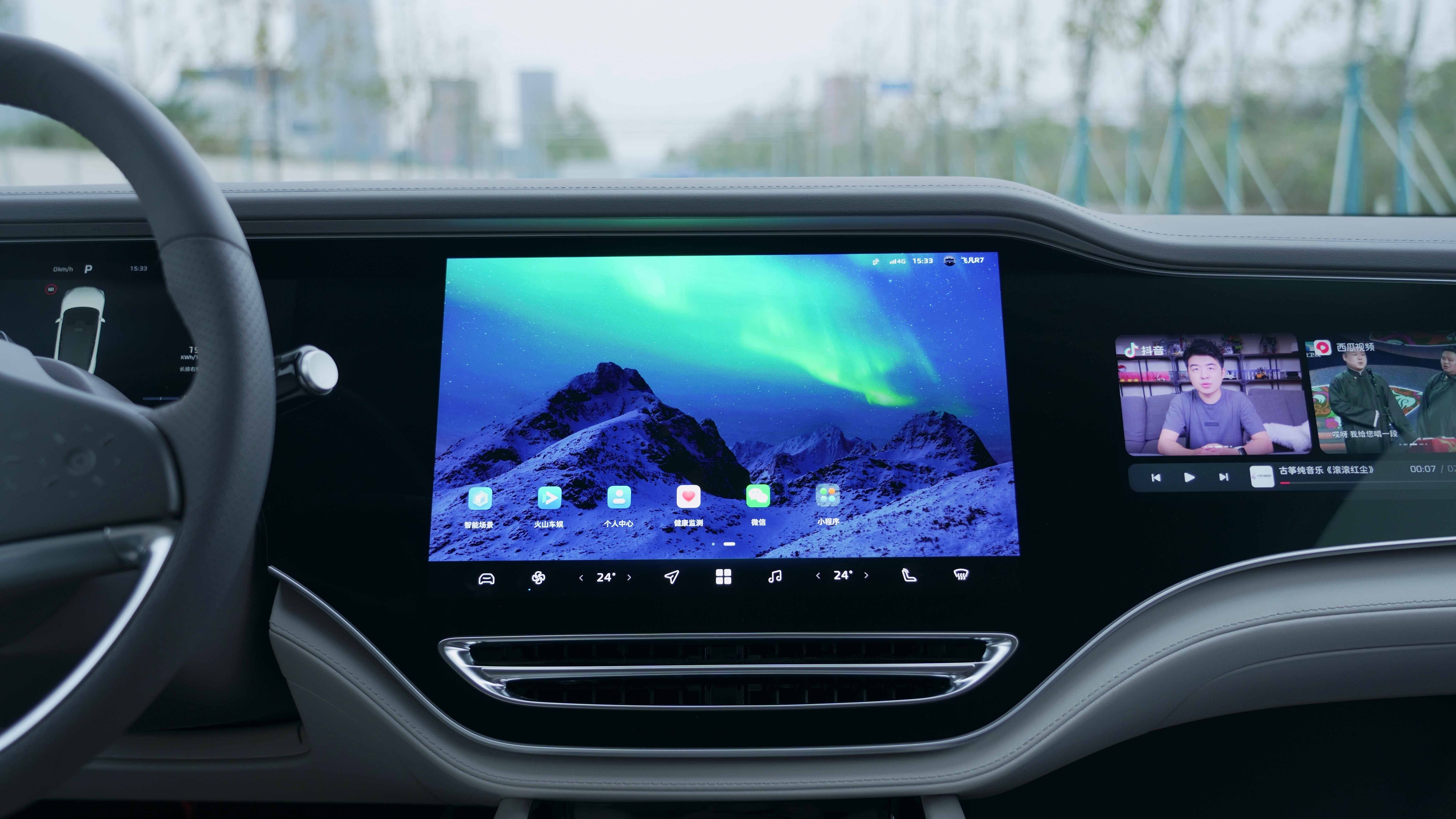
Fovan R7’s homepage also uses wallpaper as the background, with a Dock bar and application options for quick control at the bottom. In actual use, commonly used shortcuts and applications are very easy to find, even adjusting them while driving won’t be confusing. Or you can call “Hey Fovan” to help you operate. This is a voice assistant that supports 4 audio zones and has a fast response speed.
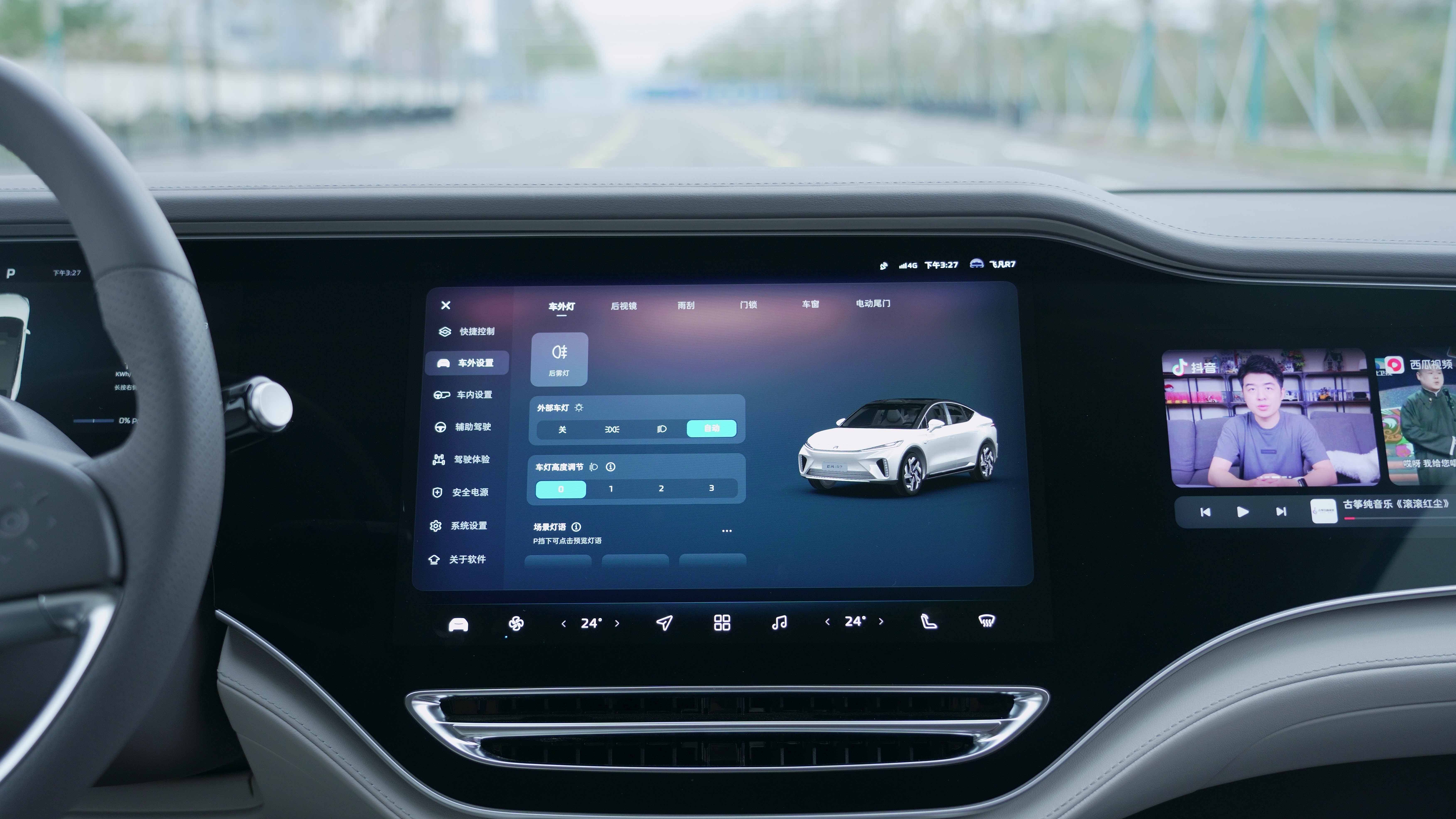
In the settings interface, Fovan R7’s menu is very clear and only two levels deep. Even if you are a new user, you can quickly find the settings you want, without having to search for certain settings in a hidden way.On the right side is a 12.3-inch co-pilot screen, with miniLED material, similar to the 12.9-inch iPad Pro screen. It can achieve finer regional luminous adjustment, effectively improving screen brightness and contrast, while controlling the display of dark areas, better solving the pain point of insufficient screen brightness under strong light on both sides for users. So when I don’t want to use the co-pilot screen, the screen in front of me becomes a full black decorative panel.
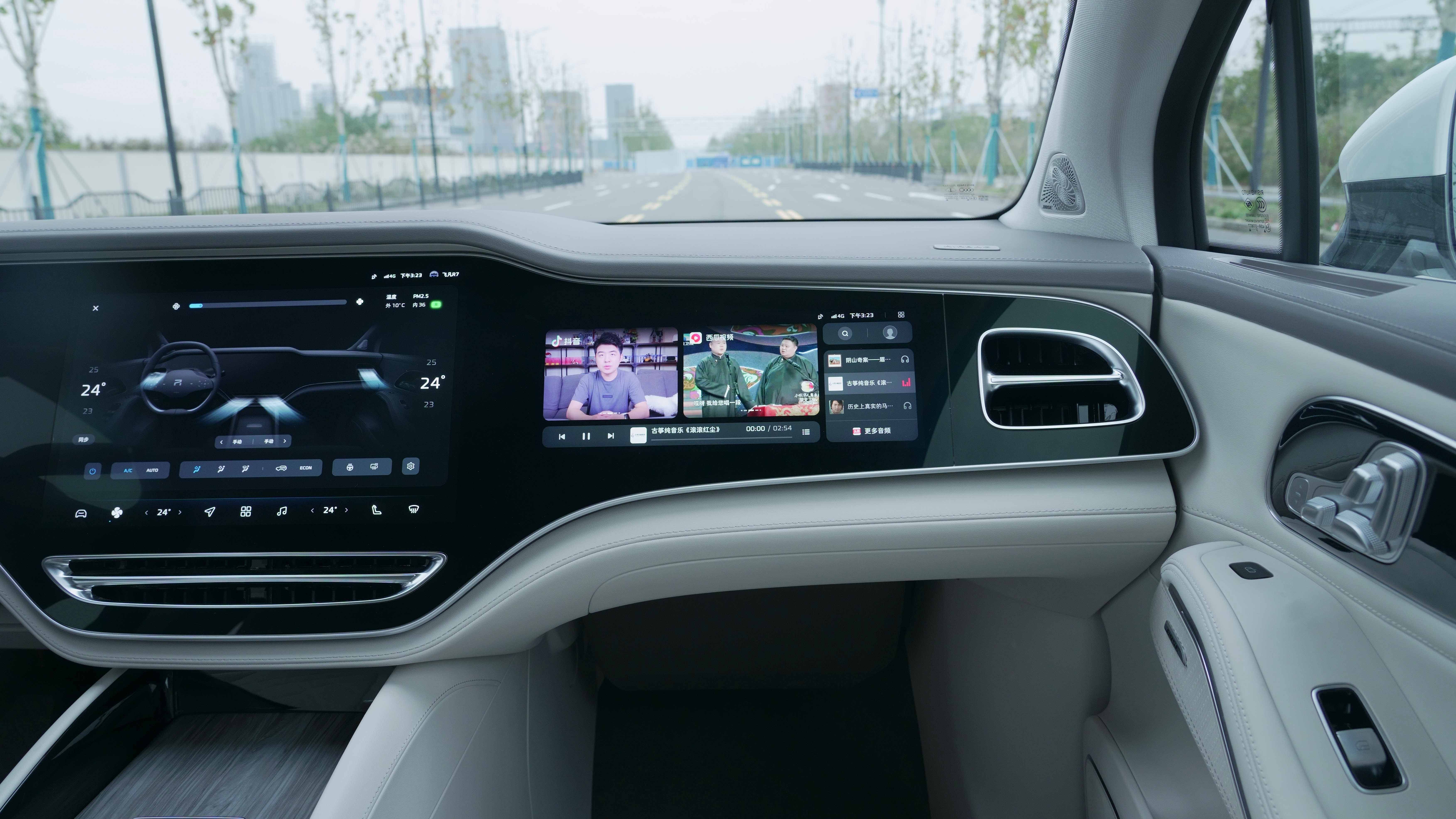
RisingAuto also carefully designed anti-peeping for the co-pilot screen. If the driver wants to see the content on the co-pilot screen while driving, they can only think about it. Here, I still want to remind everyone to concentrate when driving.
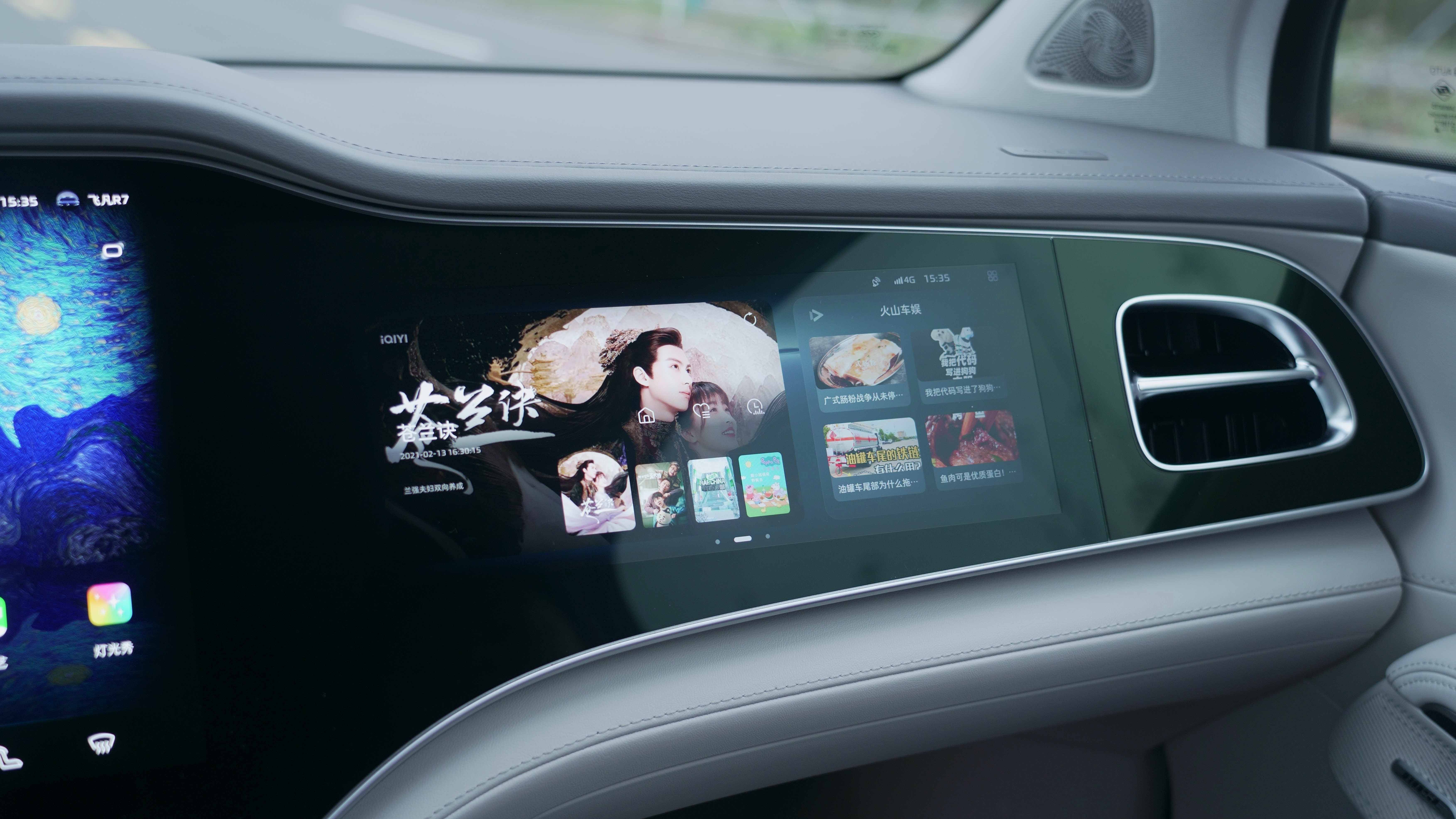
RisingAuto R7’s co-pilot screen supports three-finger sliding control. If you have selected a movie on the driver’s seat, you can directly slide it to the co-pilot screen by sliding right. At the same time, the co-pilot can also project the desired destination to the central control screen, which is very convenient.
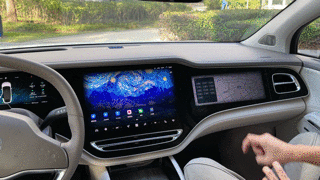
In addition, RisingAuto R7 has added a queen co-pilot and seat massage on the basis of the co-pilot screen, which can not only meet entertainment needs but also make you more comfortable. It is worth mentioning that even the footrest has a heating function, which is very considerate in the current winter. Imagine driving while the co-pilot’s wife is sitting on the massage and heating footrest, following the plot. This scene is very warm. If you have a family, this set of luxury and noble package worth 10,000 yuan is worth choosing to install.
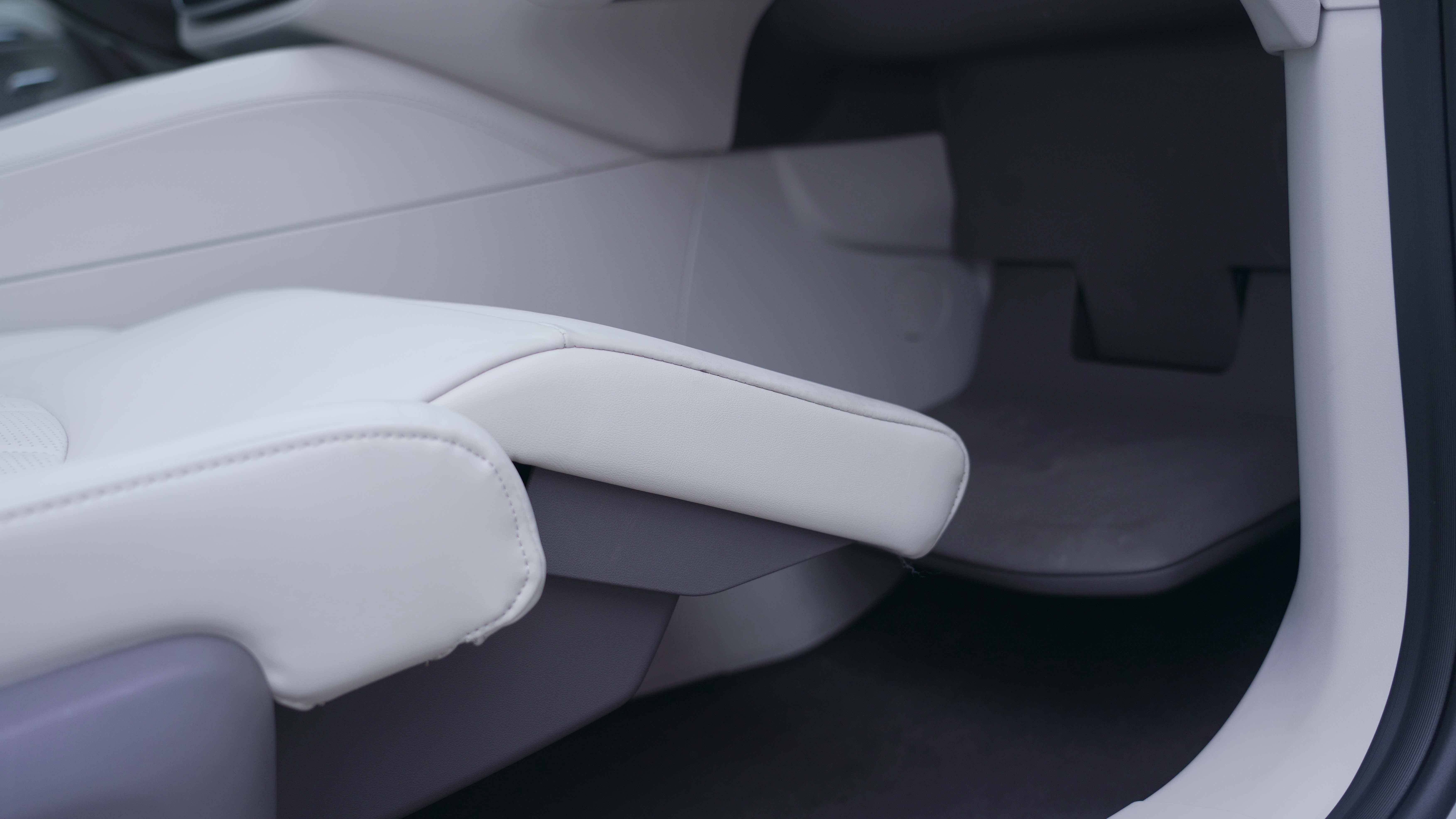
The sound of the TV series can also be transmitted from the 14-speaker Bose sound system. The auditory effect may not be as good as the kilowatt-level sound system, but considering the BOSE brand, the effect can be guaranteed.
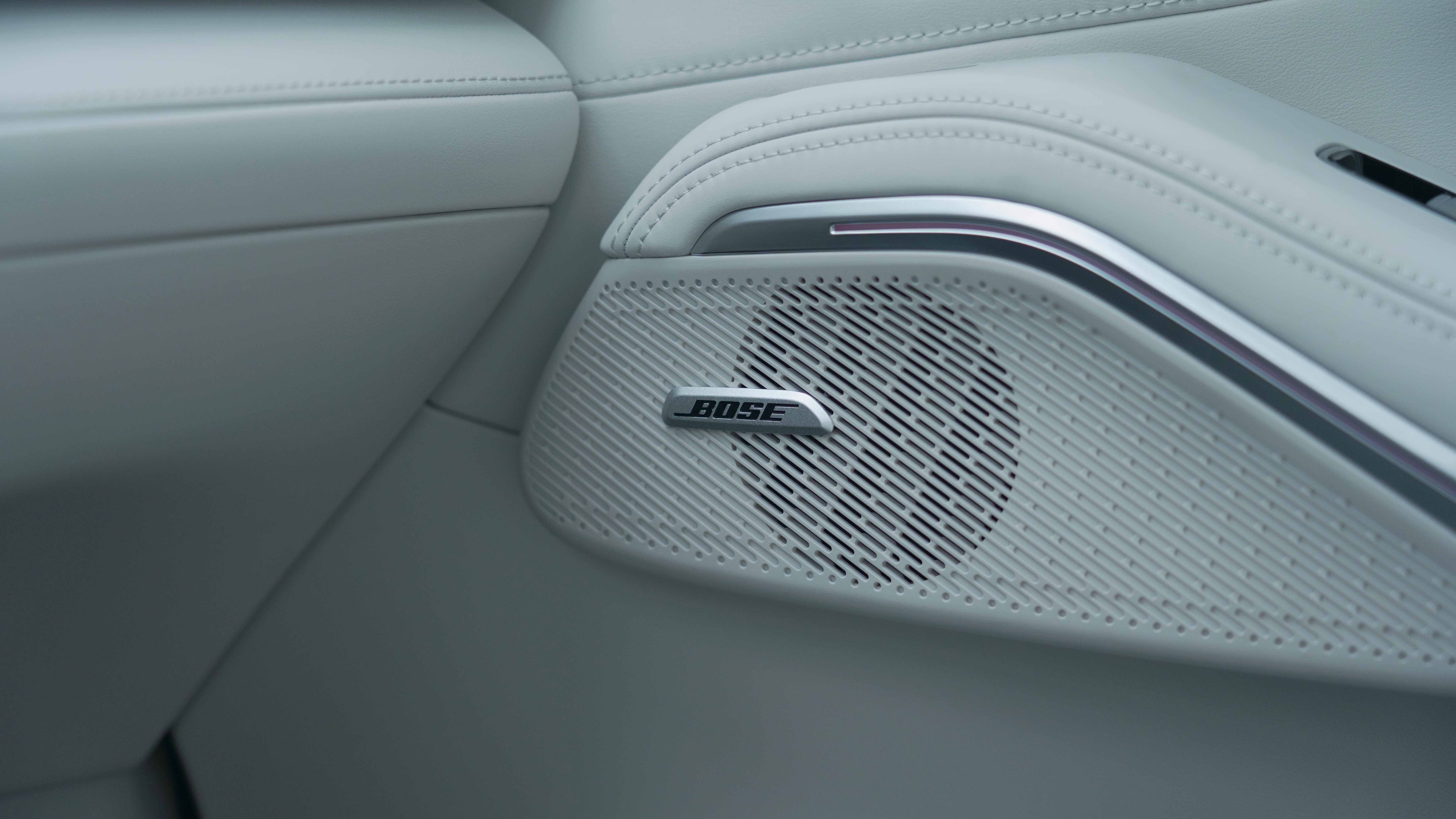 The FlyFantasy R7 boasts 3+1 screens, with an additional one hidden in the front windshield in front of the driver’s seat. The car uses Huawei’s AR-HUD system, which features the largest field of view at 13° x 5° and the highest industry resolution of 1,920 x 730.
The FlyFantasy R7 boasts 3+1 screens, with an additional one hidden in the front windshield in front of the driver’s seat. The car uses Huawei’s AR-HUD system, which features the largest field of view at 13° x 5° and the highest industry resolution of 1,920 x 730.
While driving, the navigation and danger tip information displayed on the AR-HUD system changes in real-time according to the scene, providing a futuristic experience for first-time users. According to the official introduction, the AR-HUD projection is equivalent to a 70-inch screen 7.5 meters away. It can even be used to watch movies, although the color display is not as good as directly watching a screen (there is some shooting color difference in the photo).
The design of FlyFantasy R7’s steering wheel has some controversies, as the middle area does not achieve up-down symmetry. However, after actual experience, the grip of the R7 steering wheel is quite full, and the buttons on the left and right sides of the steering wheel are relatively easy to operate due to the raised position of the central airbag cover. The only issue may be getting used to the steering wheel’s style.
In the central armrest area, FlyFantasy R7 also includes a Touch Bar operating area with six touch buttons for adjusting features such as panoramic imaging, driving mode, and volume.
Below the central control panel, FlyFantasy R7 does not feature a big groove design like competitors, but still has an armrest box. The front cover plate and the rear cover plate have a sliding and folding design, respectively, and both have good dampening, meeting the standards of a car priced at around 300,000 yuan.There is a USB-C port, a standard USB data port and a microSD card slot when opening the front panel, which is very convenient for external data transfer. Below the ports, there is a wireless phone charger, which has enough capacity for an iPhone14 Pro and even a Pro Max.
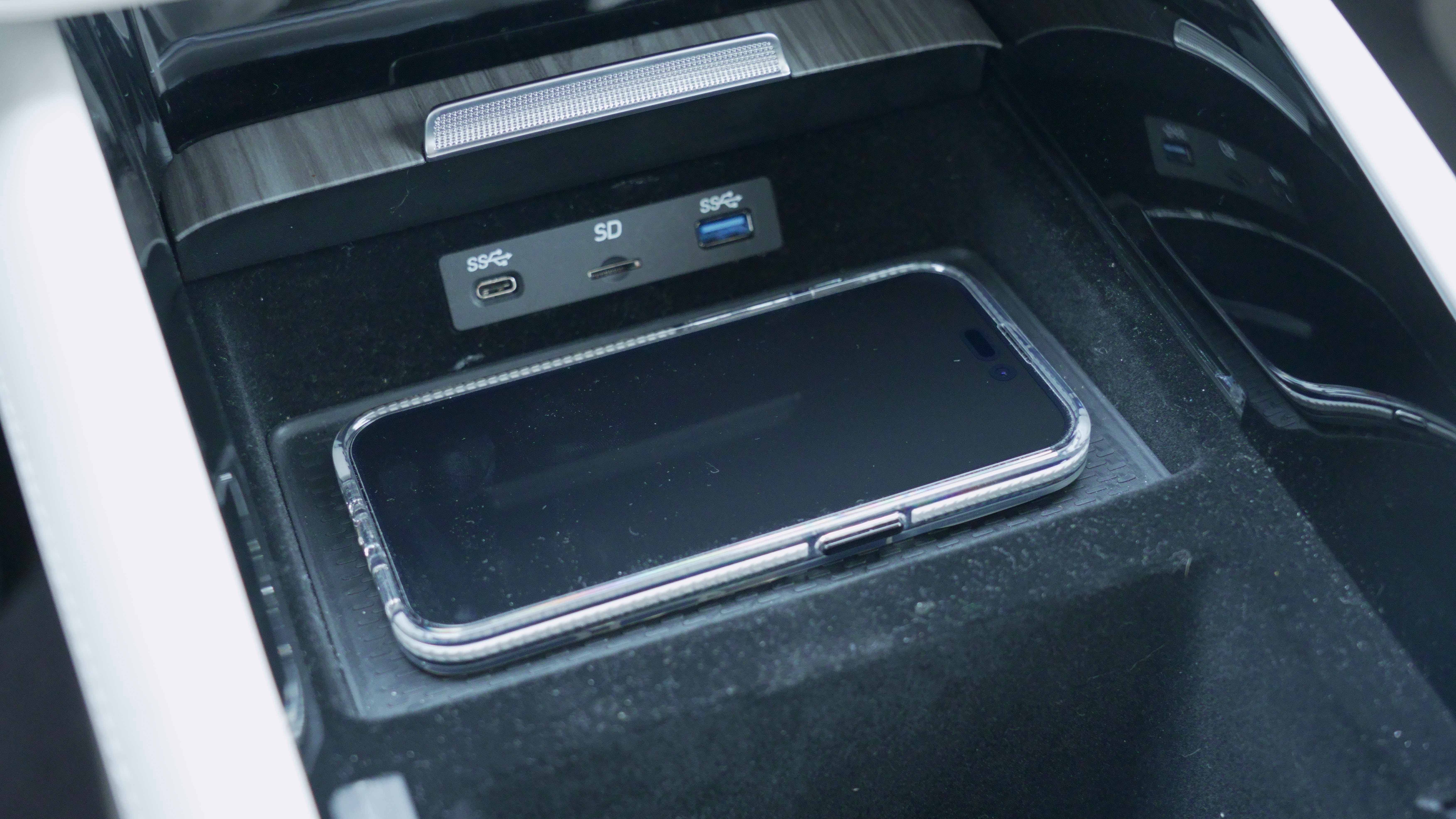
Opening the back panel reveals two cup holders that can be extended up and down, with velvet material inside. If you don’t want to put water in the cup holder, you can lift it up to make a complete space. During the shooting process, I put my camera here and don’t have to worry about scratching the velvet material.
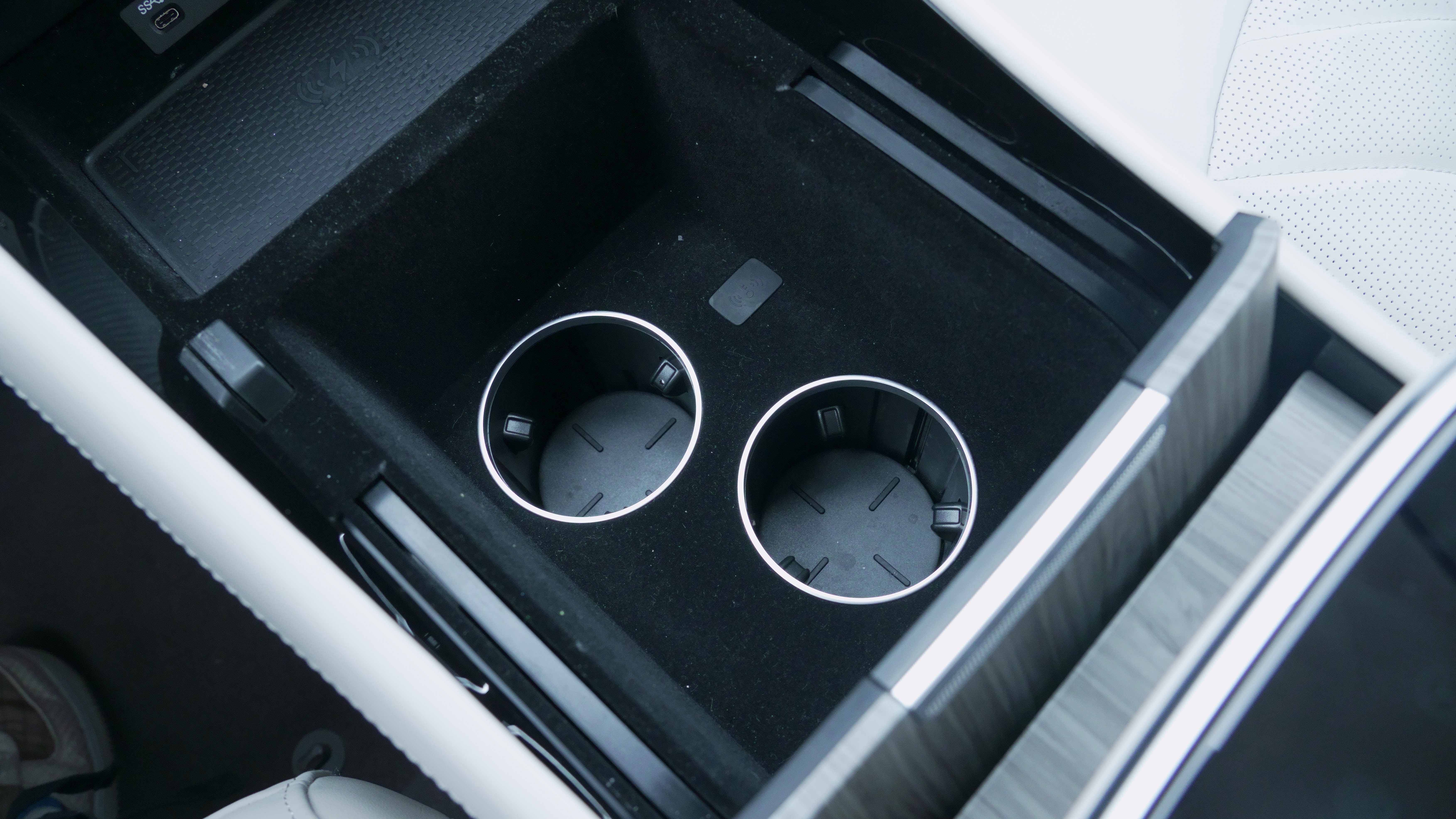
In terms of air outlet design, the Flyin R7 also uses a screen to control the angle, which is similar to the hidden air outlets used by Tesla Model Y, XPeng P7, and NIO ES7 to save console space. The Flyin R7 did not hide its air outlet from the design perspective, which is a bit of an electric control for the sake of electric control. But the experience is good, and it can sweep the wind.
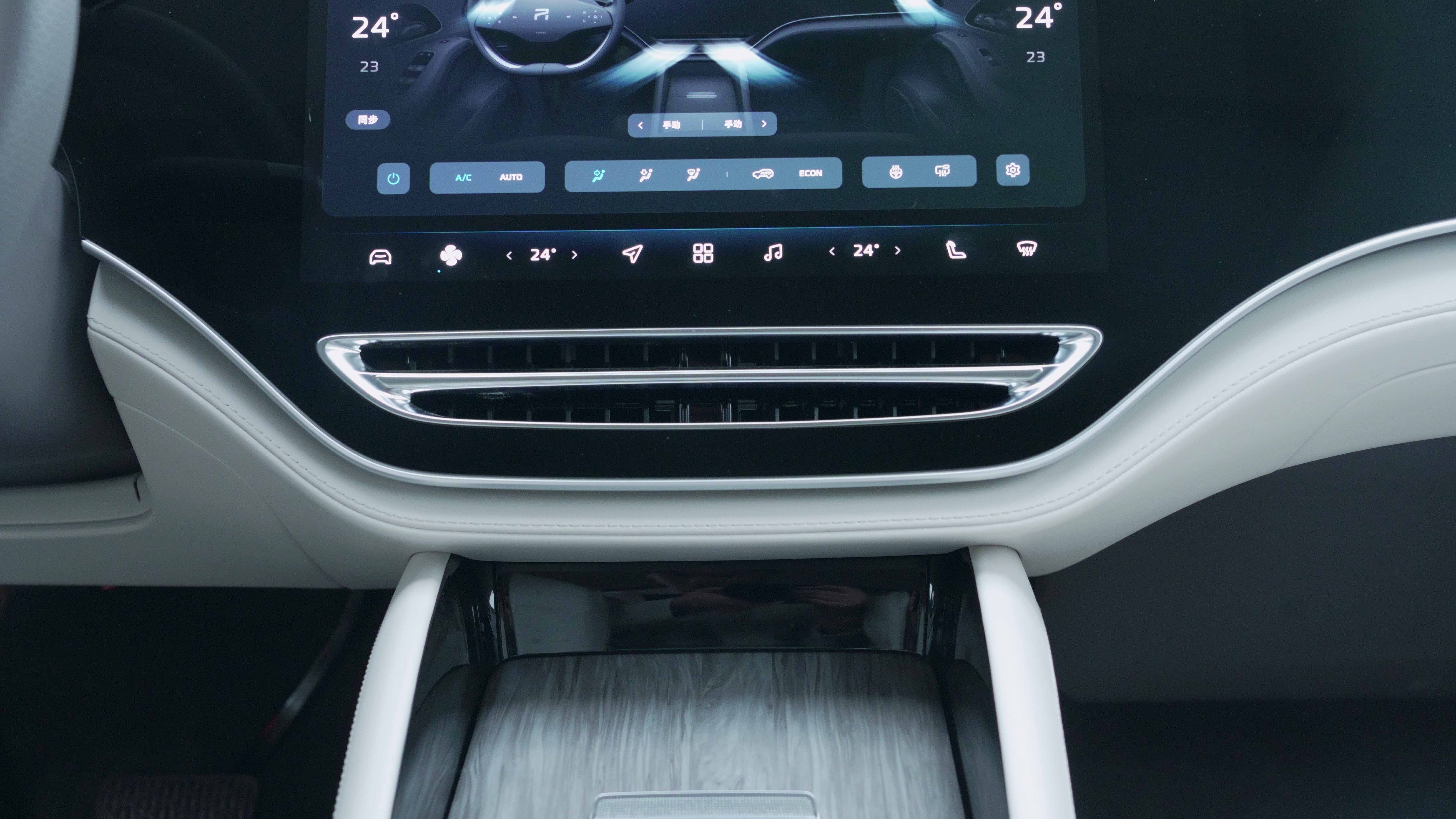
As for the cabin of Flyin R7, this car achieves an excellent level of intelligence hardware in the same level and meets the needs of the young consumer group for various functions of the car. In addition to its high hardware specifications, the Flyin R7’s interaction is also outstanding. My feeling is that this RISING OS system is meticulously designed, which puts it in a very competitive state at the same level.
Cabin Space
After getting to know Flyin R7’s intelligent cabin, let’s take a look at its space performance as a mid-size SUV. After all, for young users nowadays, they often go out with family and friends.
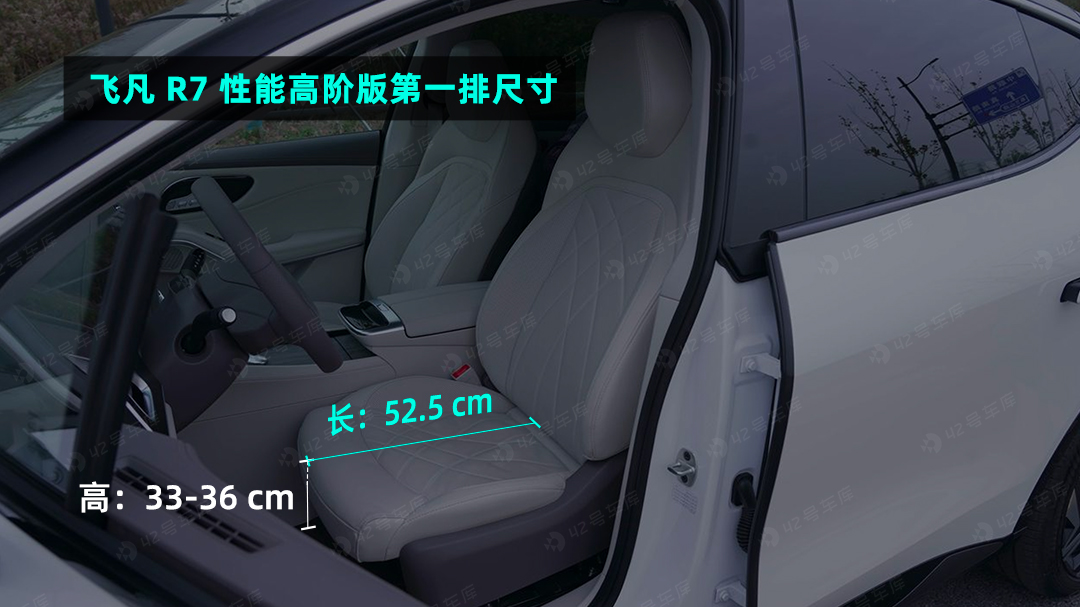
The front seats of the FEIFAN R7 are designed with a one-piece bucket seat that looks sporty and solid. The actual riding experience of the FEIFAN R7’s seat cushion is slightly hard, belonging to the type of seat with good support. Even after sitting continuously for 4-5 hours, there was no phenomenon of backache or waist ache. In addition, the driver and front passenger seats also support massage function, with up to 7 different massage types. After choosing the luxury package for an additional 10,000 yuan, the material of the seat cushion is upgraded to Nappa, which is very delicate to the touch.
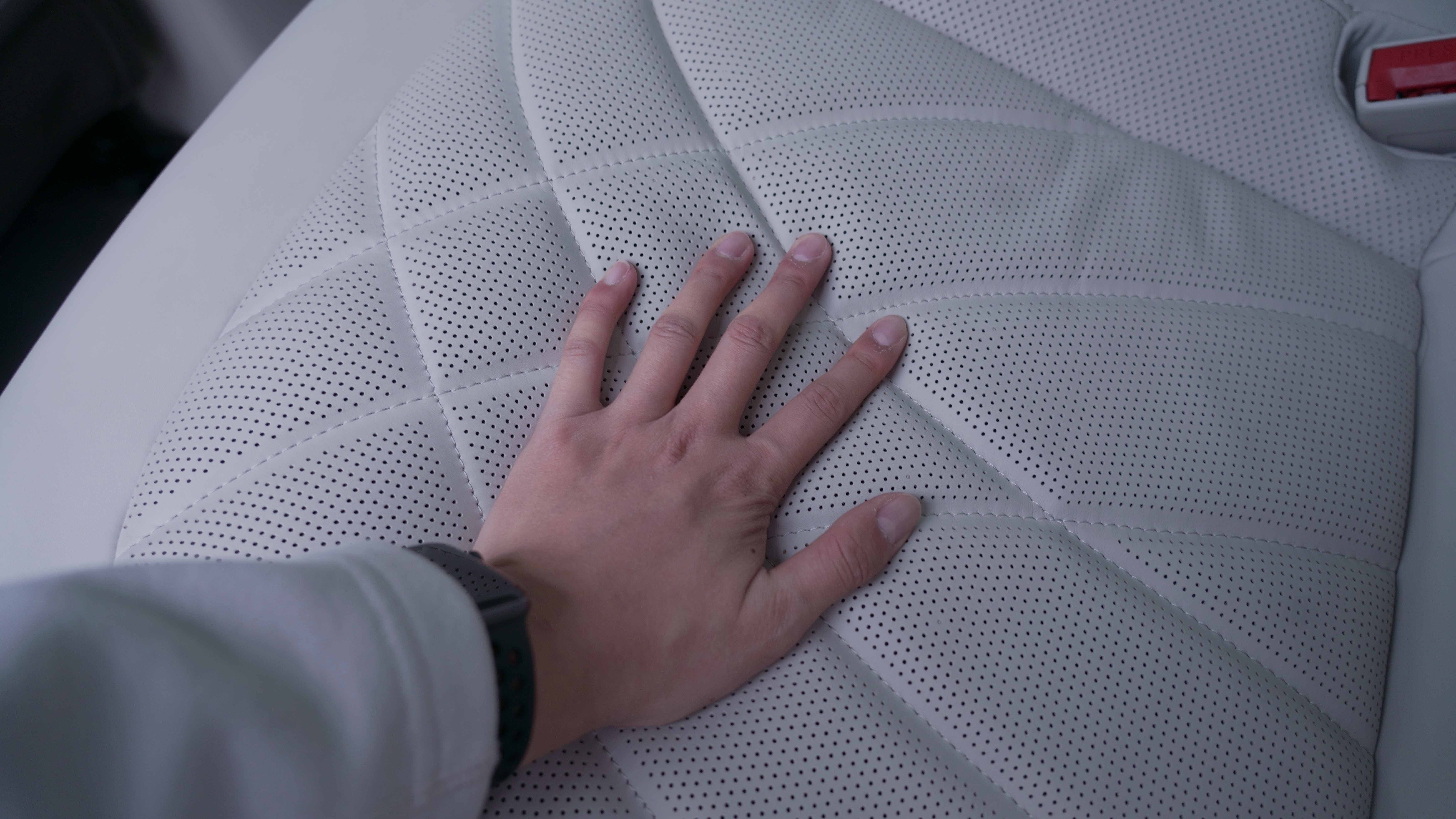
The seat cushion of the FEIFAN R7 is relatively wide, and even users who weigh more than 1.8 meters and weigh more than me will not feel cramped. Moreover, the seat adjustment range is also quite wide, and users who are 1.8 meters tall can still have plenty of headroom. If I had to ask for more, I would hope that the FEIFAN R7 could have a leg rest adjustment, even though the current support for the thighs is sufficient.
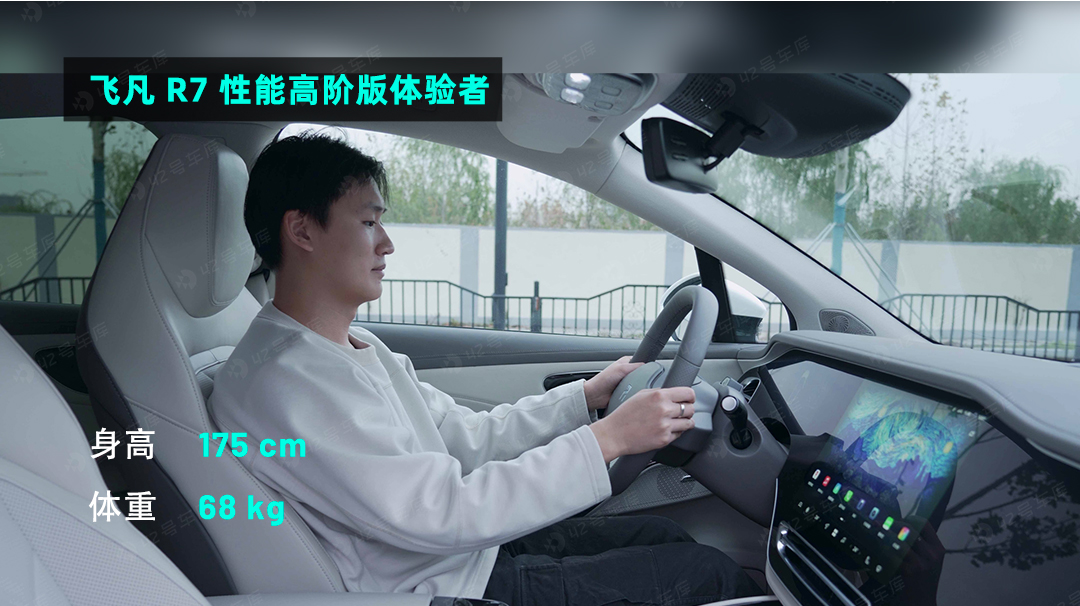
Regarding the space of the rear seats, with my height of 175cm and weight of 68kg, with the driver’s seat adjusted to a suitable position for me, there is a palm-size legroom in the rear. The headroom is not affected by the sloping roof design, and there is still two fist-sized space, which has dispelled my previous doubts.
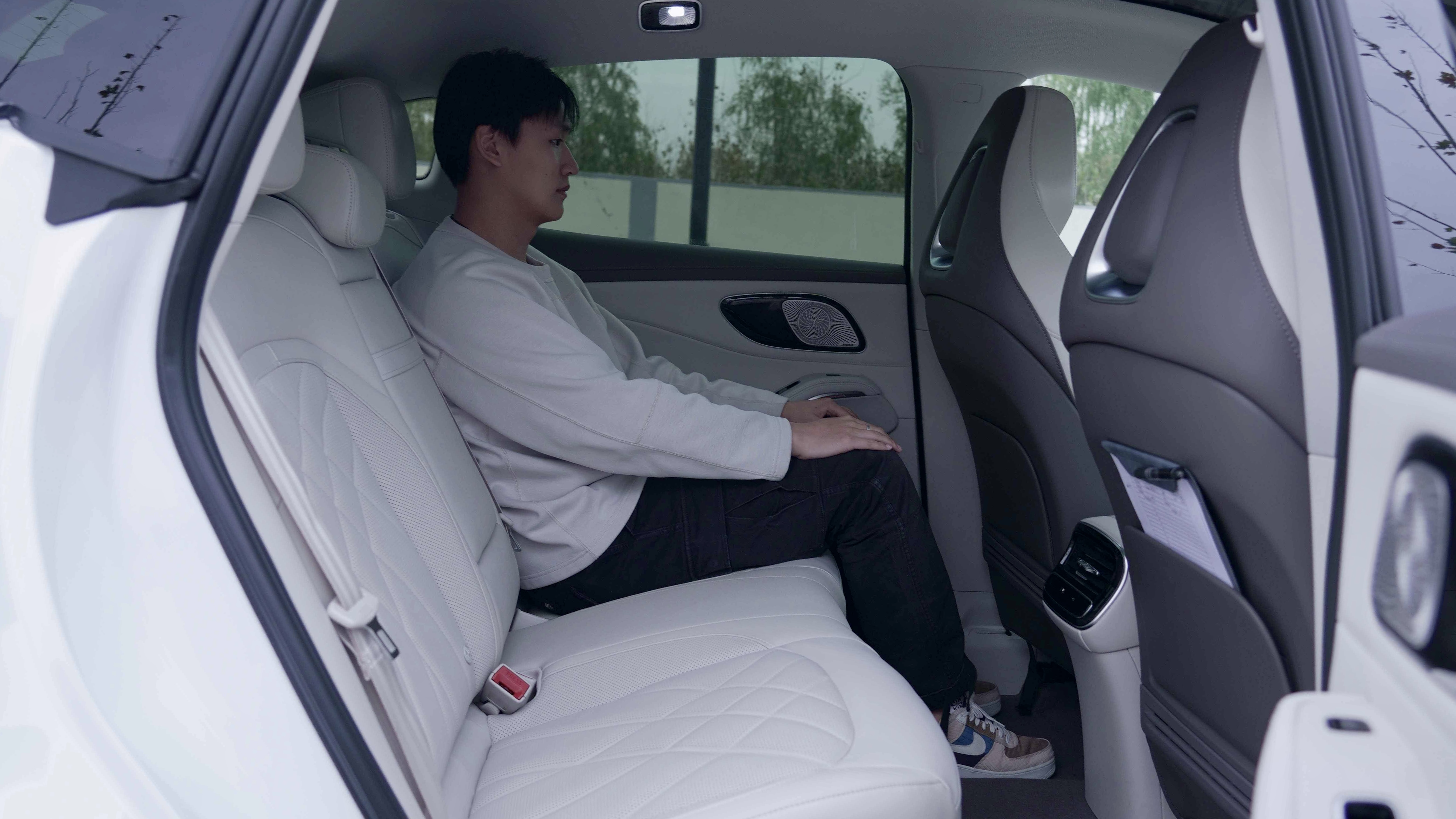
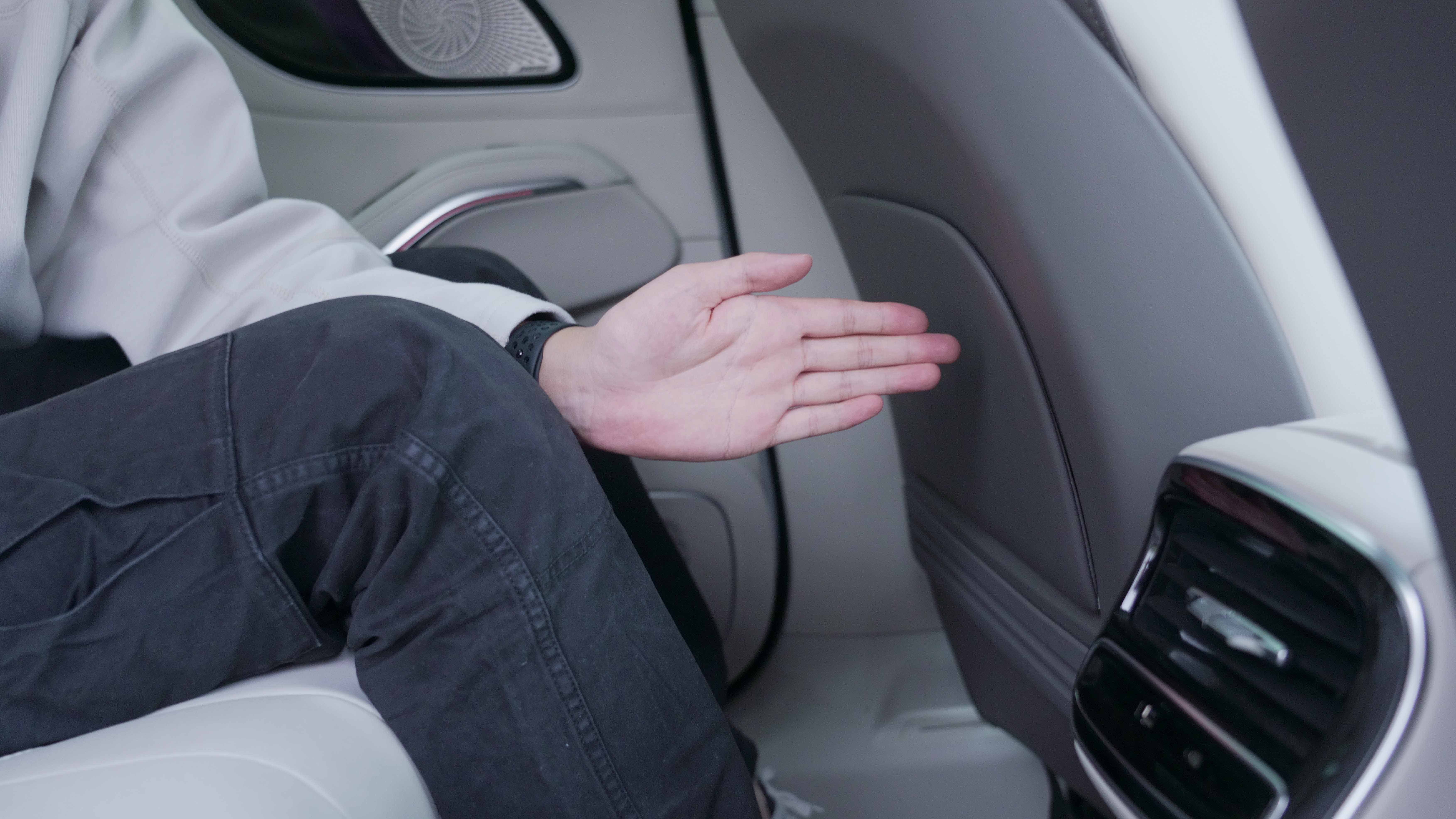
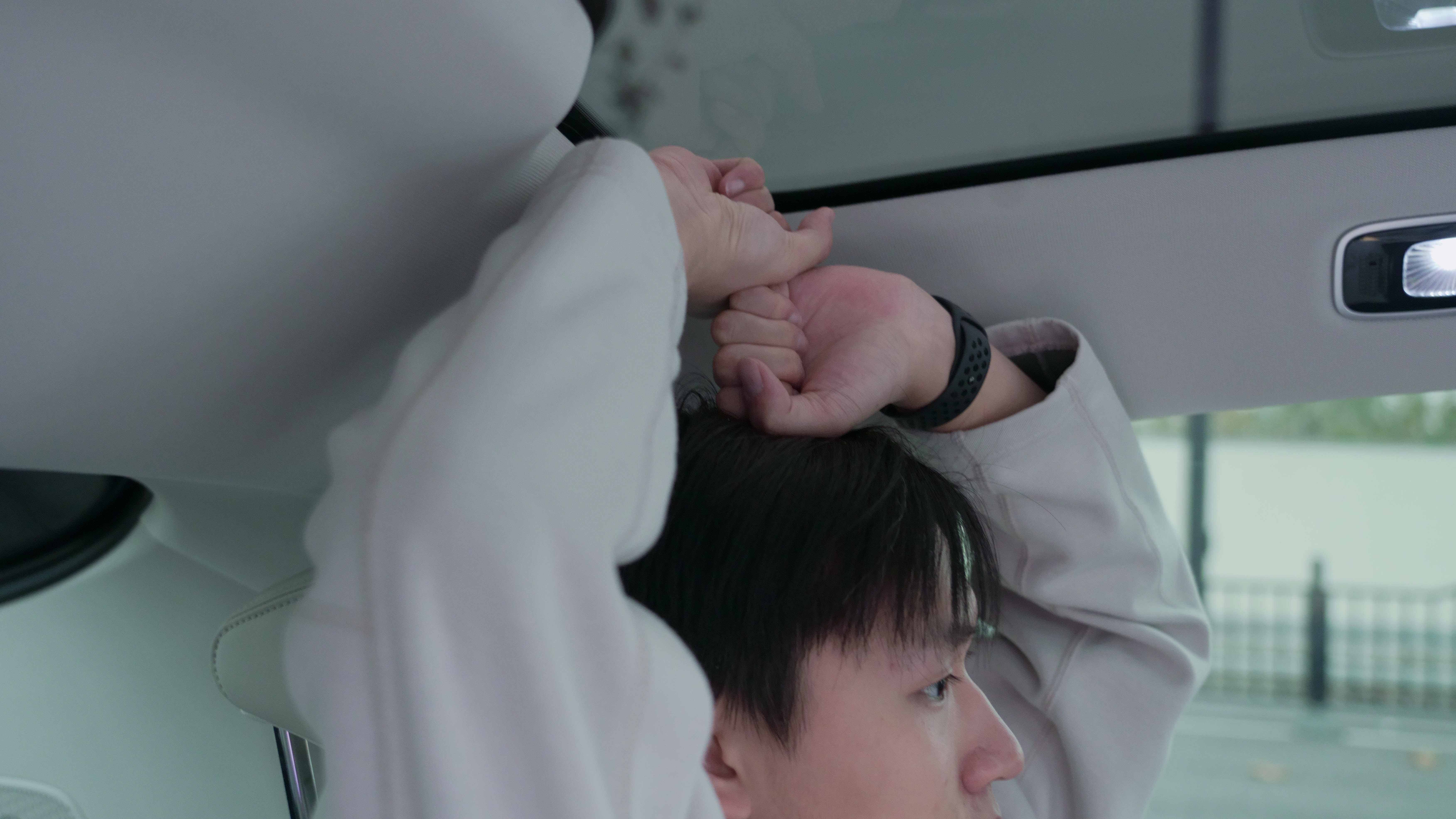
The upper part of the FEIFAN R7 uses a panoramic sunroof to exchange for more headroom. The lower part is designed with a laying-type battery to reduce the height of the floor, combined with the longer wheelbase to move the seats forward without sacrificing legroom, even taller users will not feel suppressed.The length and height of the rear seats of the FEIFAN R7 are almost the same as those of the front seats, which provides equally comfortable ride performance and good support and stability. The middle seat of the rear seats is somewhat soft, but the backrest is slightly hard, which is sufficient for five people to travel with a full load in daily use. One drawback is that the angle of the rear seats cannot be adjusted.
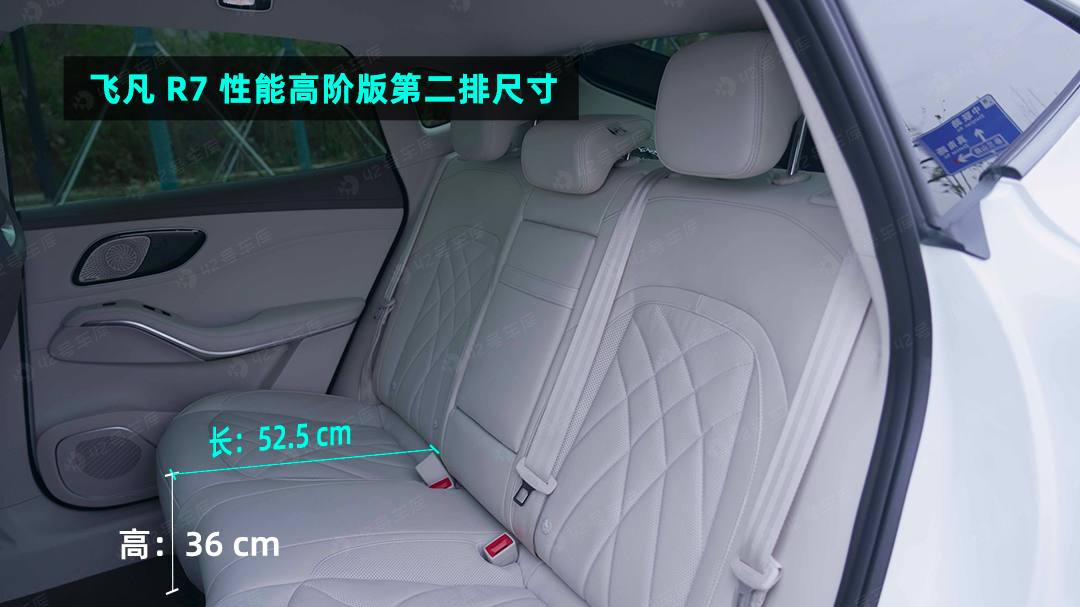
As an SUV produced by a renowned manufacturer, FEIFAN R7 shows solid workmanship in ergonomics such as seat cushions, seat posture, and space. It can satisfy the needs of two, four or fully loaded passengers as a midsize SUV. Its performance in software, interaction logic, and other areas is also impressive. As a hatchback SUV aimed at the young market, its driving experience should be able to match its sporty appearance.
Driving Experience: Consistent Inside and Outside
Since it targets young consumers, the vehicle’s performance parameters have become the most concerned points of this group of users. This is also why the high-performance version has become the most popular version. With a subsidized price of 326,900 yuan, you can buy a dual-motor model with a maximum power of 400 kW, consisting of 150 kW on the front and 250 kW on the rear that can accelerate to 100 km/h in 3.8 seconds.
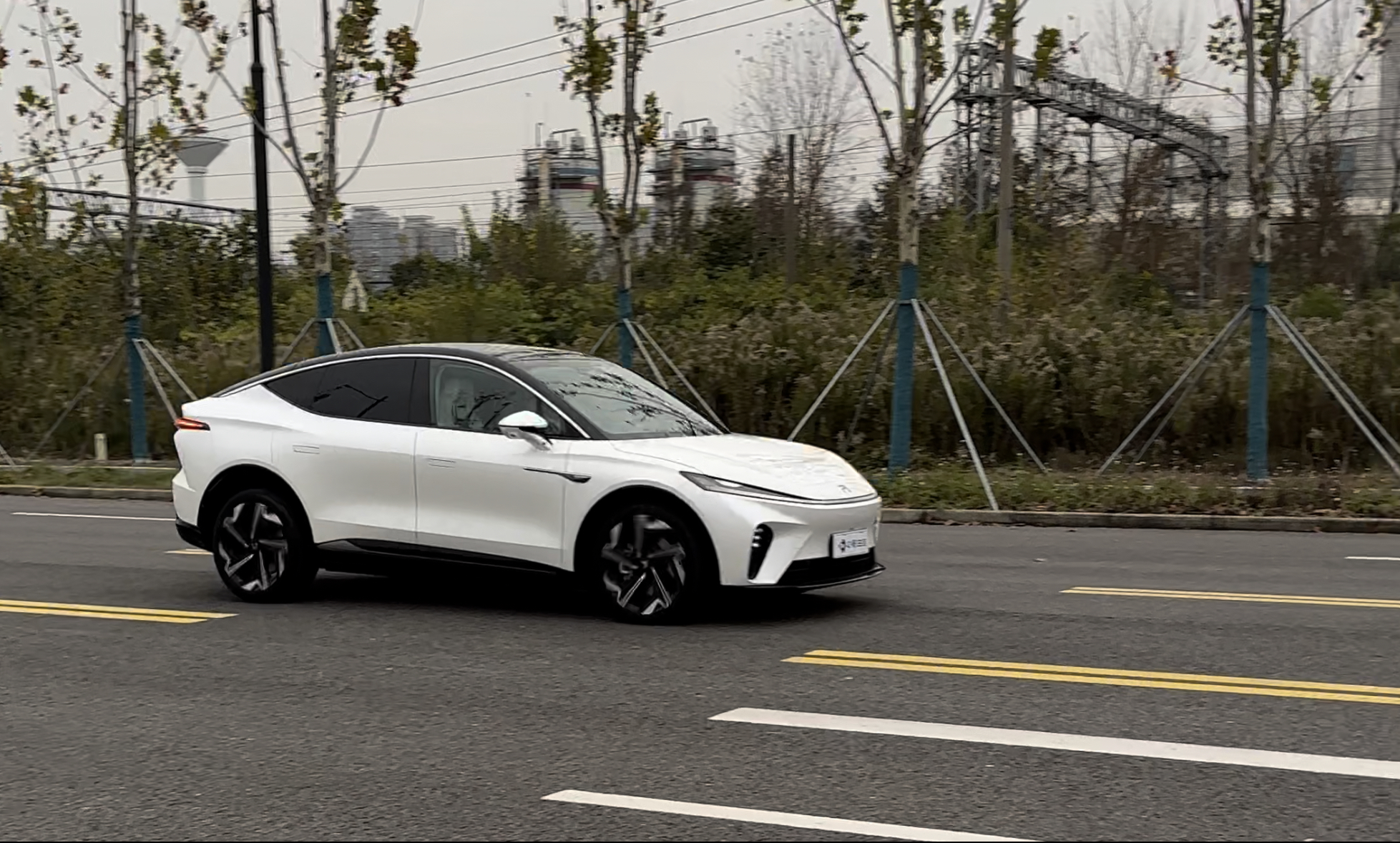
Although we did not test the acceleration time of this car to 100 km/h, 3.8 seconds of acceleration in the actual test is very impressive, which is comparable to sports cars that take four seconds to accelerate in the same price range. “FEIFAN R7’s accelerator pedal is well-tuned, very linear and easy to control, and avoids nervous jumping,” said a commenter.
In the central control screen, you can also adjust the power response infinitely according to your needs. In my daily use, I tend to adjust the response to the medium or turn on the adaptive switch, which is more in line with the needs of daily commuting.
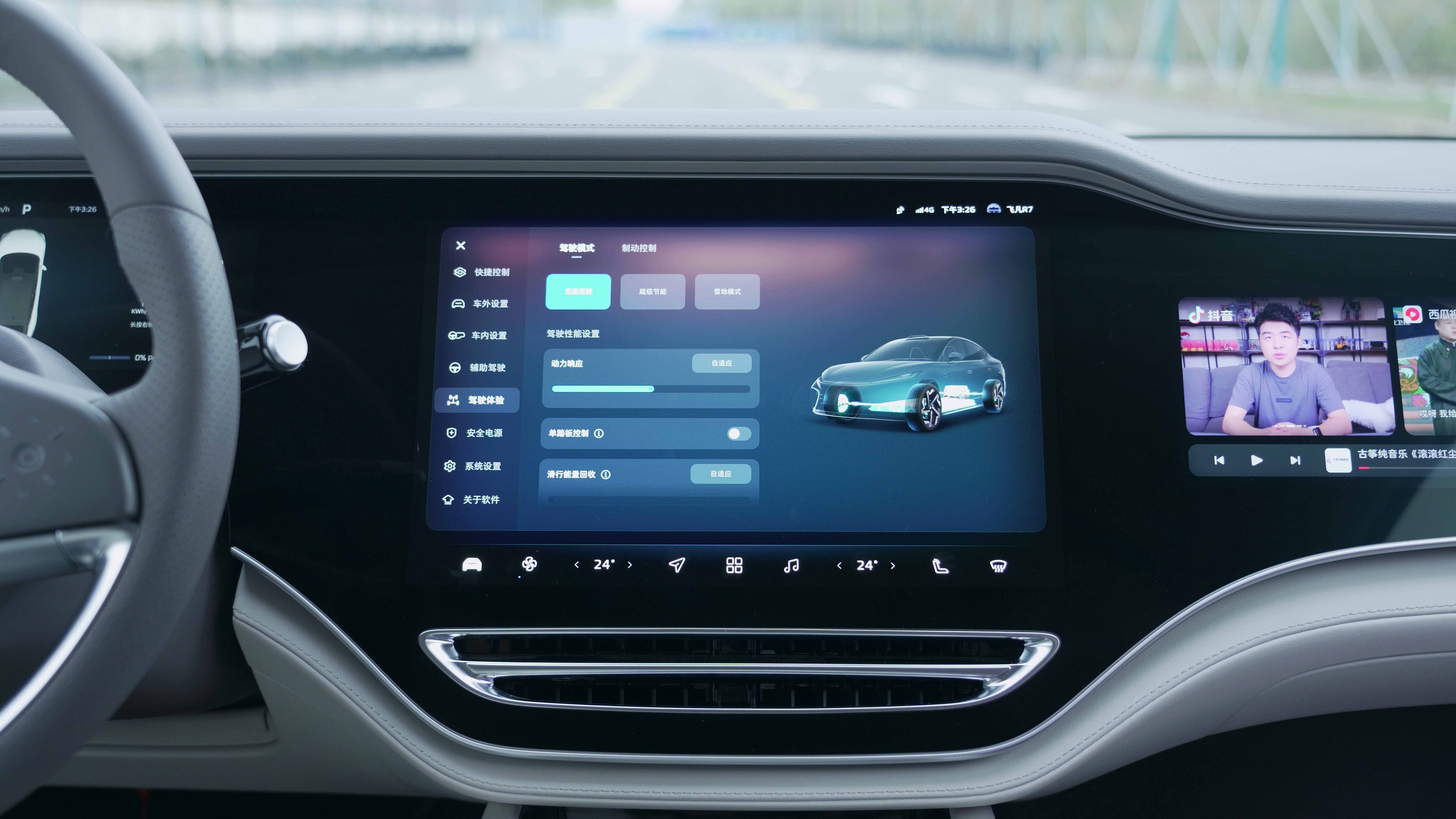
You have to be able to stop fast when you run fast. The official braking distance of FEIFAN R7’s four models is 37.1 meters per 100 km. We tested the 90 kWh battery, the long-endurance high-performance version of the braking distance. The shortest distance was only 31.8 meters, which was 5.3 meters shorter than the official standard. The results were excellent. The stability of ten consecutive emergency braking is also very good, with almost no thermal decay.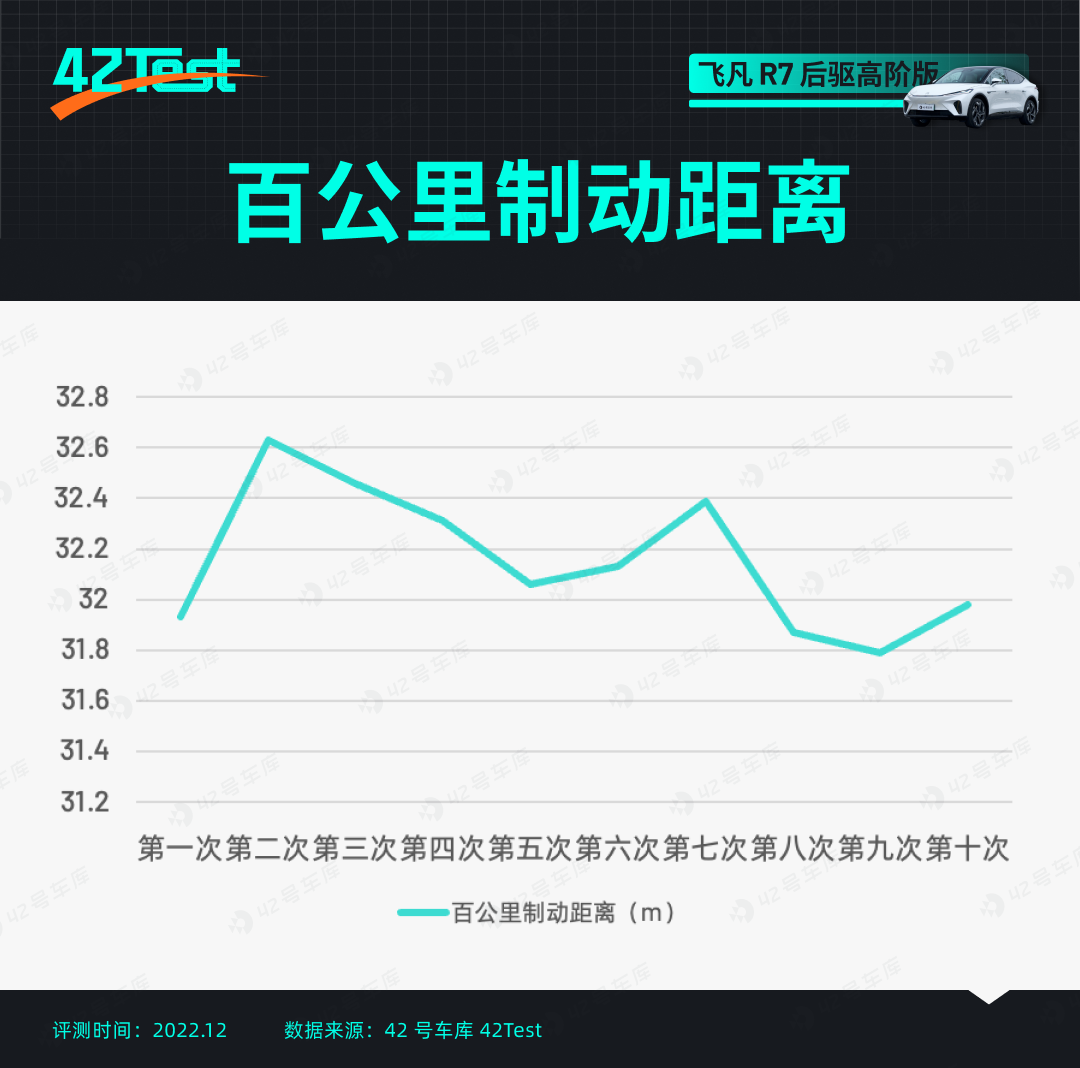
Just like acceleration, the energy recovery control system of FEW R7 can also achieve adaptive regulation. At the same time, there are three adjustable brake pedal feelings. Under the sports braking pedal feeling, the pedal will become particularly tense. Just a light touch on the brake will make the vehicle nod. The above ten groups of braking distances were measured under sports braking.
No matter what kind of driving style you have, you can always find a suitable driving mode. This is a great feature.
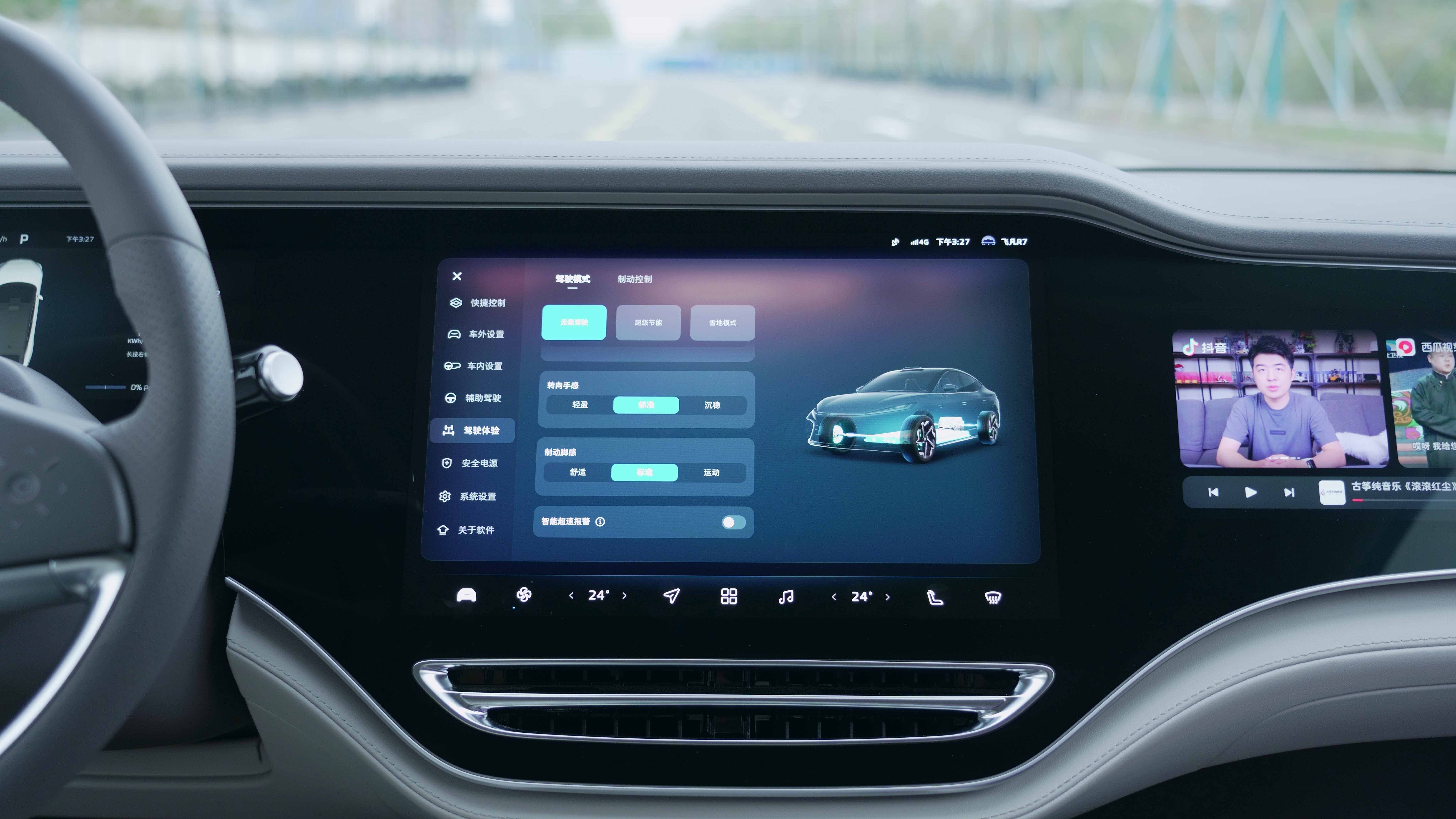
The handling performance of the FEW R7 is beyond my expectations. I originally thought that Chinese brand medium and large-sized hatchback SUVs, although they look sporty, would prioritize comfort in driving experience. But it turns out that the FEW R7 has more sporty characteristics in its chassis texture, and it matches well with a 3.8-second acceleration.
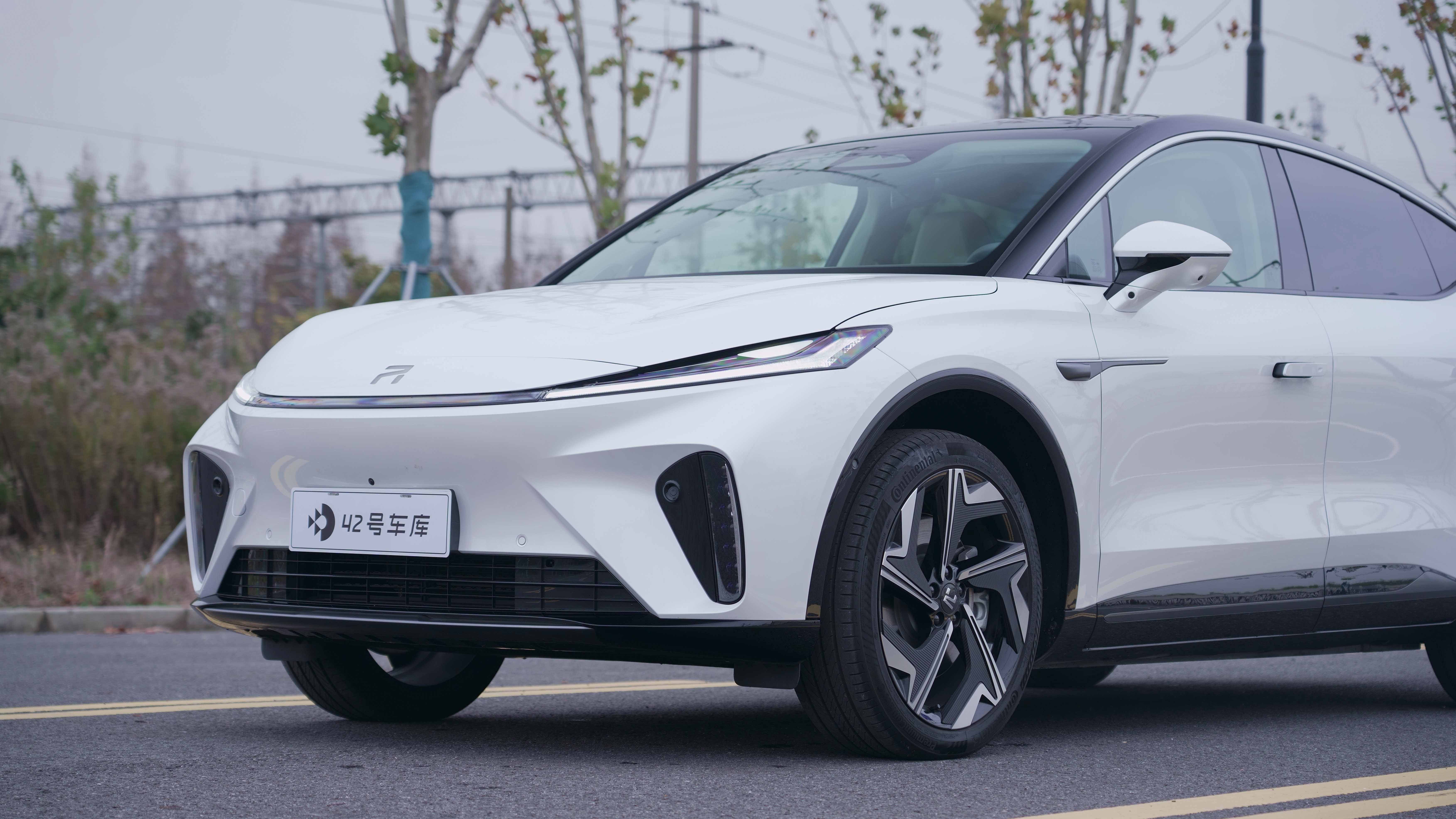
Firstly, I personally like the steering feel of the FEW R7, which is slightly heavy and damped, giving me more confidence in driving. Its damping is not very mechanical, which is relatively comfortable. The steering feel is delicate and the overall character is like a sports car.
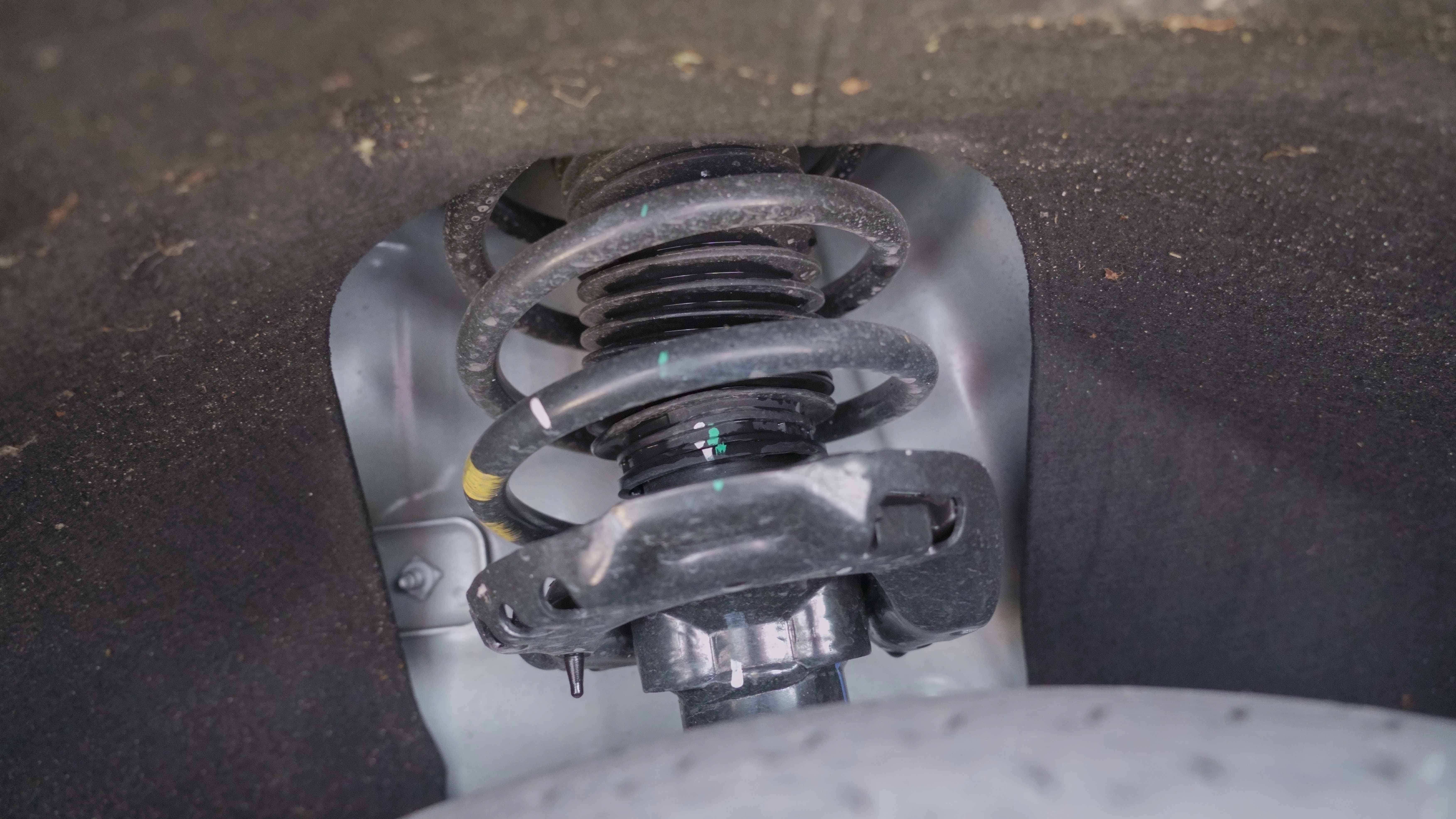
Secondly, the chassis of the entire vehicle is very tough. When driving on high-level roads and highways, the feedback from the road surface is relatively clear. The vehicle’s chassis can communicate well with the driver, and the sensory experience is closer to that of German luxury cars. The FEW R7 suspension structure is a front MacPherson and rear multi-link independent suspension. Although it doesn’t have the more advanced double-wishbone structure of higher-end models, it maintains good balance between the front and rear axles, and sufficiently reflects the rigidity of the vehicle when driving on bumpy roads.
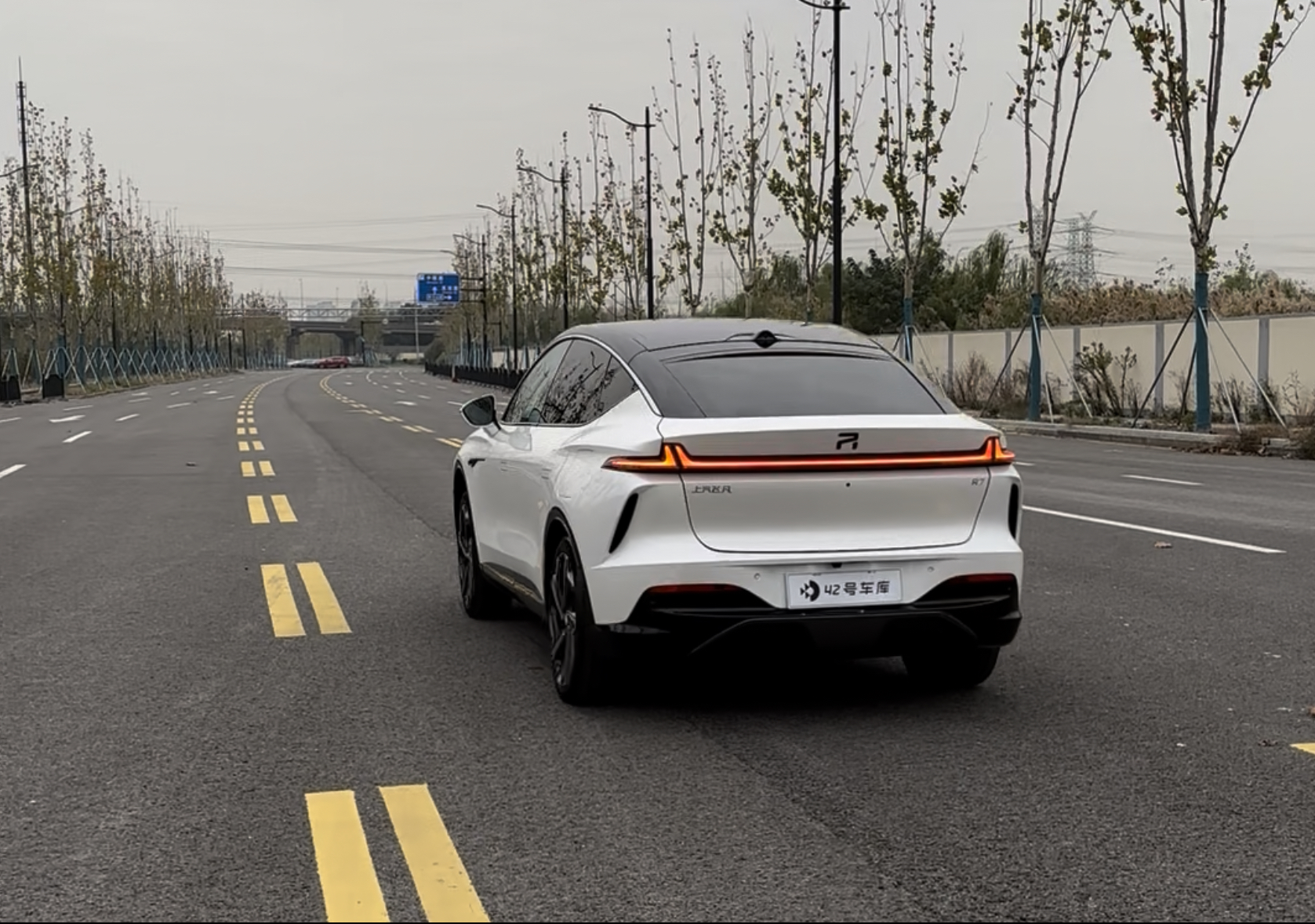
There are gains and losses in every trade-off. The firmer and sportier chassis performance of the FEIFAN R7 may please drivers, but passengers may feel the road sense more acutely, although it is not at the level of being unsuitable for family use. You can also choose to install the luxury passenger package for 10,000 yuan, adjusting the seat to the most comfortable position and watching a TV series. The driver can enjoy the driving experience while the passenger can immerse themselves in their own world. It is no wonder that more than 60% of buyers opt for this luxury package.
The high-performance version of the FEIFAN R7 has a consistent personality both in appearance and actual driving performance. Its appearance is sporty and its driving performance matches it. The high-performance version of the FEIFAN R7 is a calm and easy-to-drive car for everyday use, and its NVH performance is satisfactory for family needs. Occasionally, it can also satisfy users’ needs for intense driving.
Battery Life: Can Performance and Endurance Be Combined?
Generally speaking, strong performance and long battery life are like fish and bear’s paw, not both can be achieved at the same time. In the case of daily commuting in the city, the FEIFAN R7 high-performance version’s energy consumption performance is good, with a 17.7 kWh/100 km energy consumption for its 400 kW twin-motor. For the R7 with 90 kWh battery pack, it can achieve a frequency of 400 km per charge in daily use. For users whose weekly travel distance is less than 400 km, it is generally possible to charge once a week.

During the test drive of the FEIFAN R7 high-end long-range version, the dynamic range display left a good impression on me. It can provide very accurate range reference values, just like the Volkswagen ID. series.
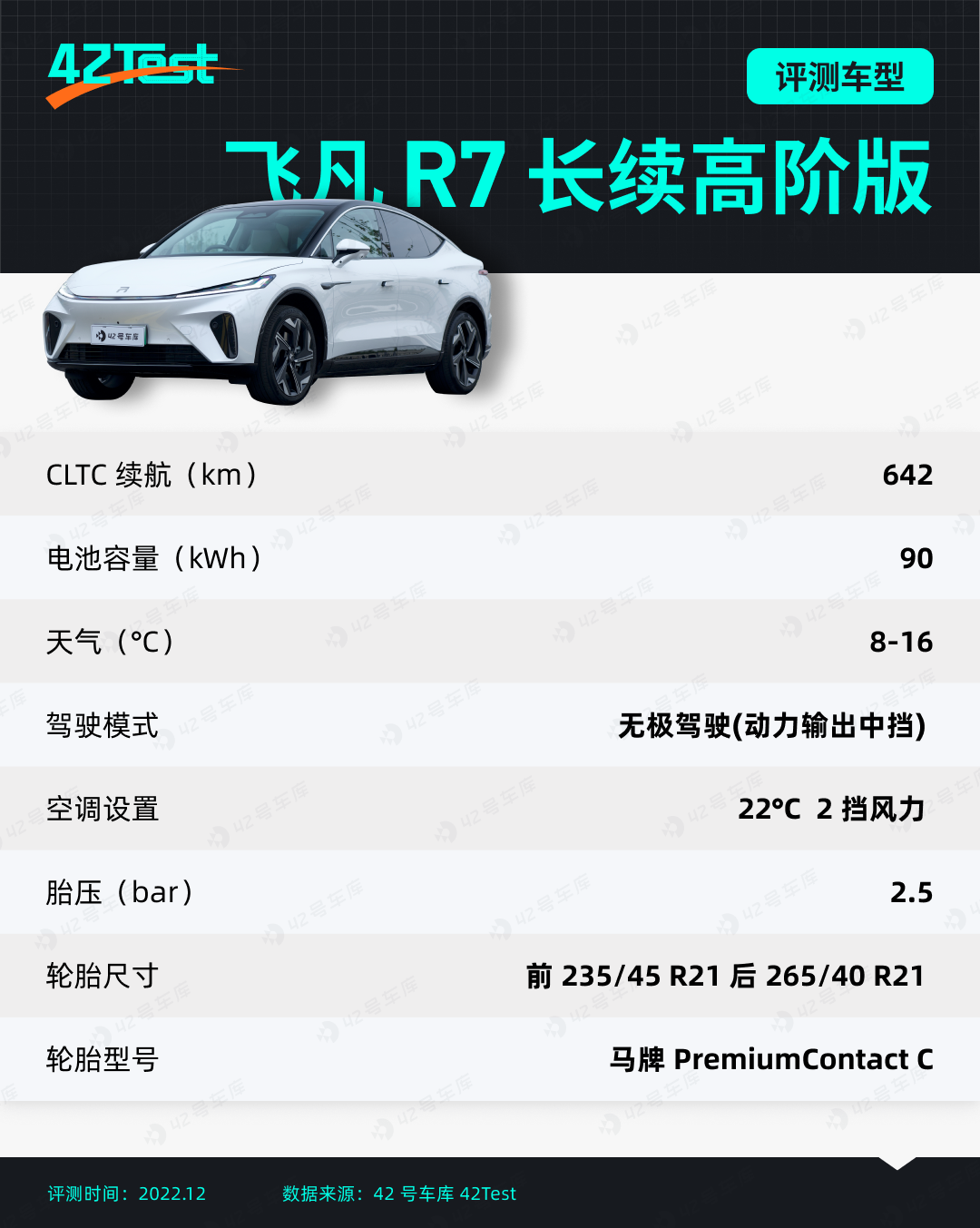
In Shanghai, where the temperature is poised to drop below 10 °C, the high-speed endurance of the FEIFAN R7 long-range high-performance version is 434 km, and the winter endurance rate is 67.6%. The actual/displayed range ratio was 1:1.18, which makes it a highly reliable reference value for daily use.
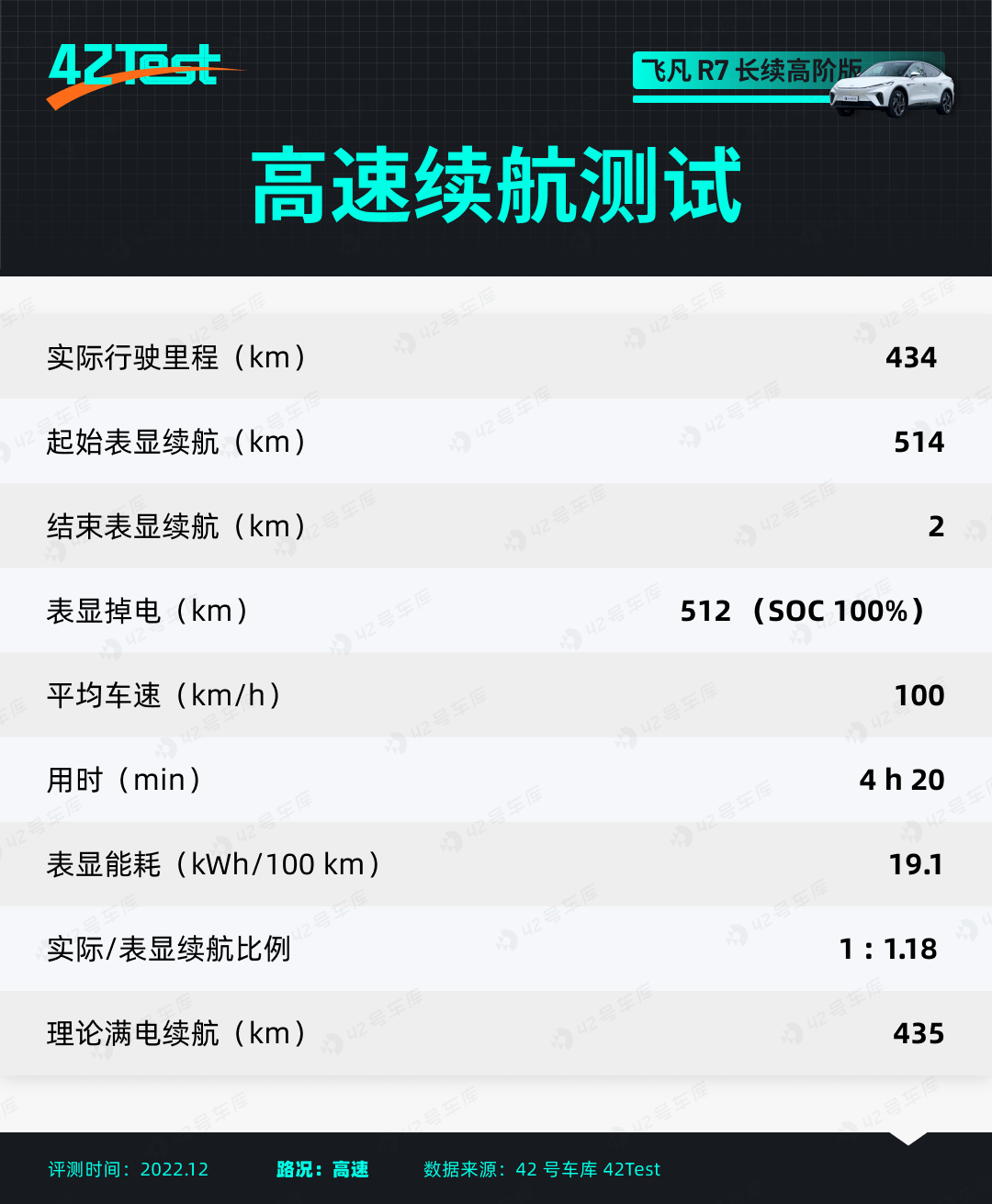
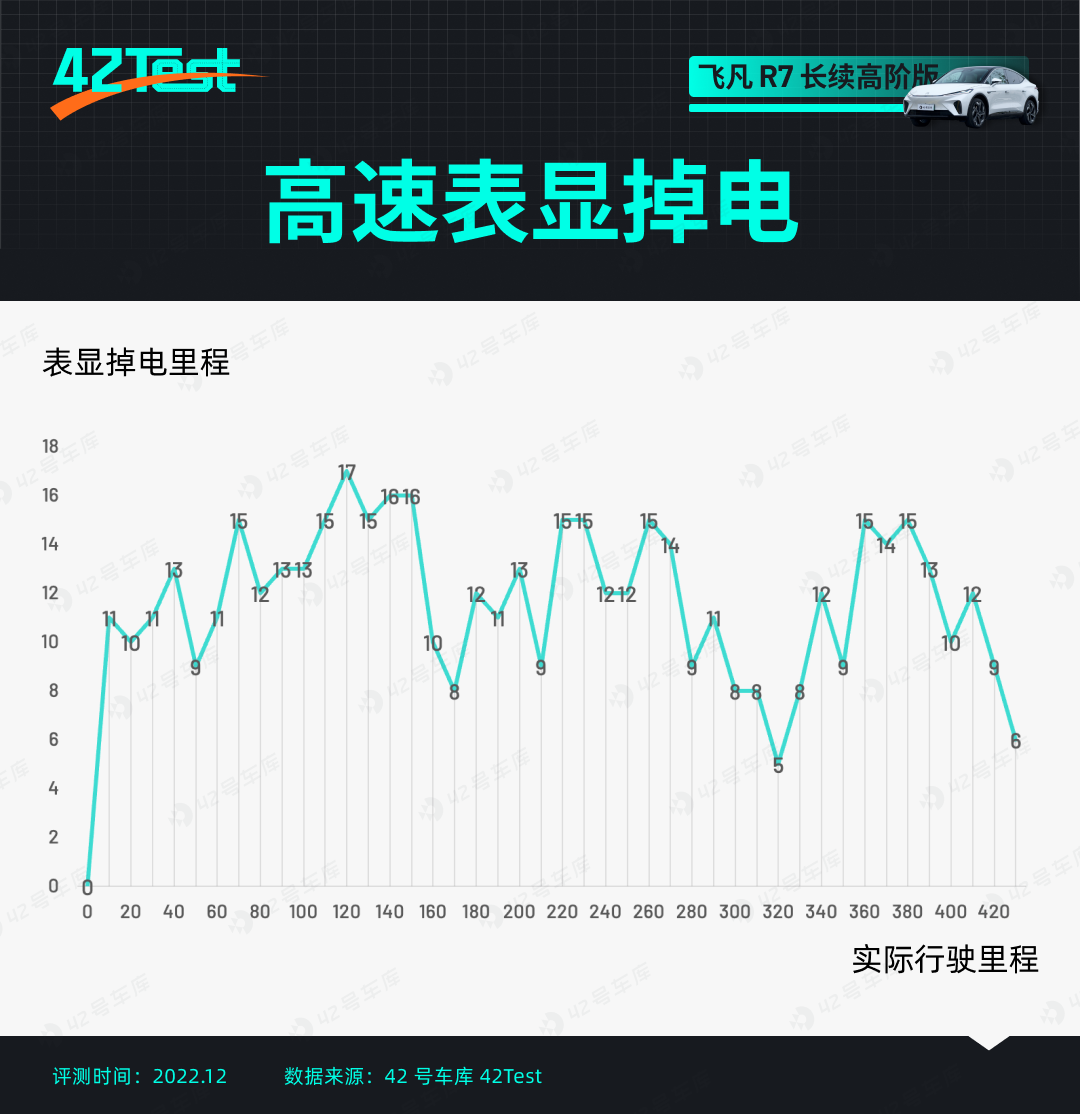
Due to the high-speed endurance test conducted the day before, the mileage displayed on the dashboard of the FF R7 already memorized the high energy consumption under high-speed driving conditions. Therefore, when conducting the urban endurance test, the FF R7 even displayed a reverse virtual mileage, which also happened on the Volkswagen ID.6 tested before.
After a 150 km urban endurance test, the displayed endurance mileage only decreased by 82 km, equivalent to an incredible 715 km theoretical full-charge urban endurance mileage. The main reason for this is that during the test, the remaining SOC was relatively high and the weightage of historical energy consumption was large. When the SOC is low, the weightage of instantaneous energy consumption will increase to adjust the displayed endurance mileage. Calculated based on energy consumption of 16.6 kWh per 100 kilometers, the theoretical urban endurance mileage of the FF R7 Long-endurance High-level Version should be around 500 km.
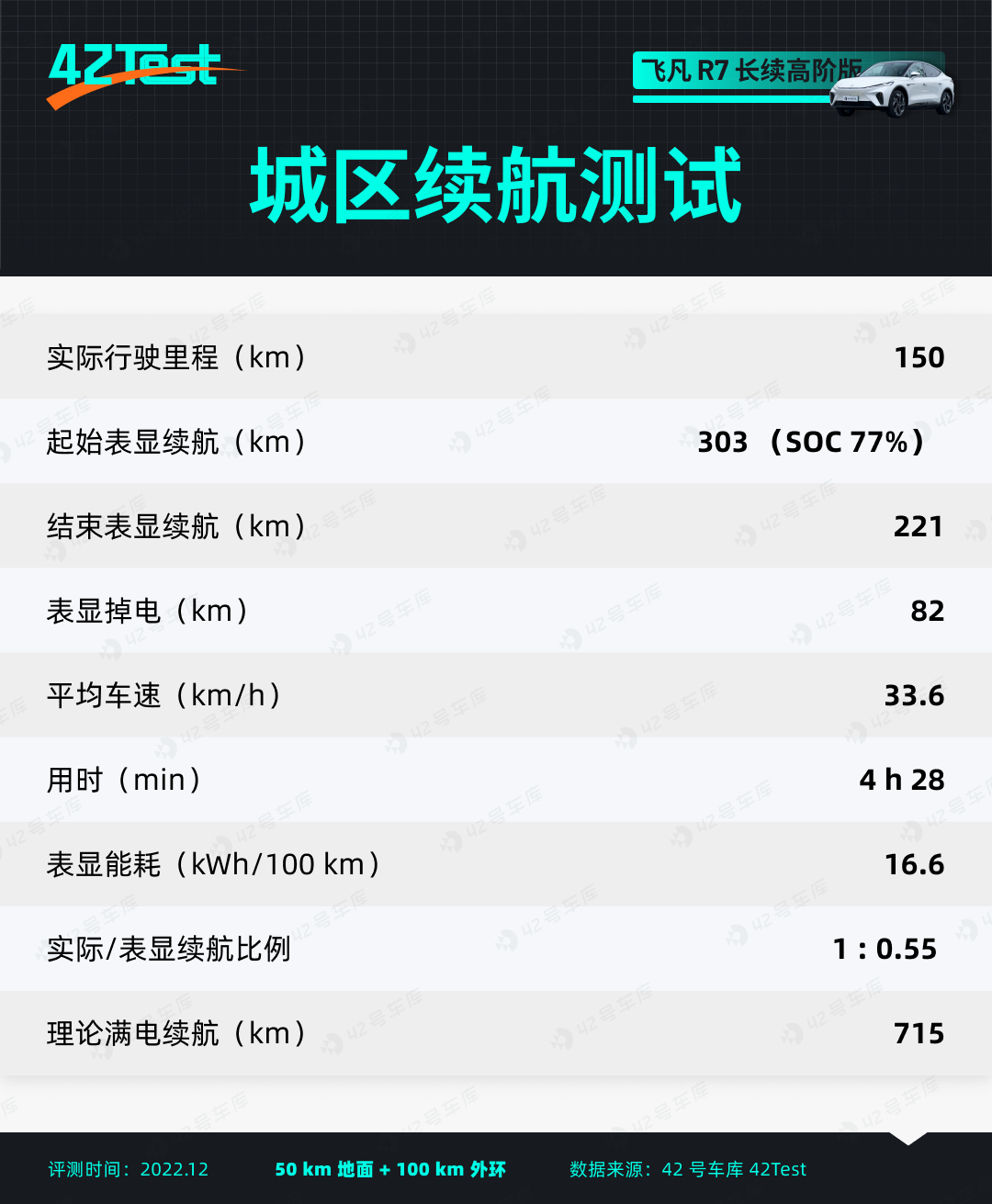
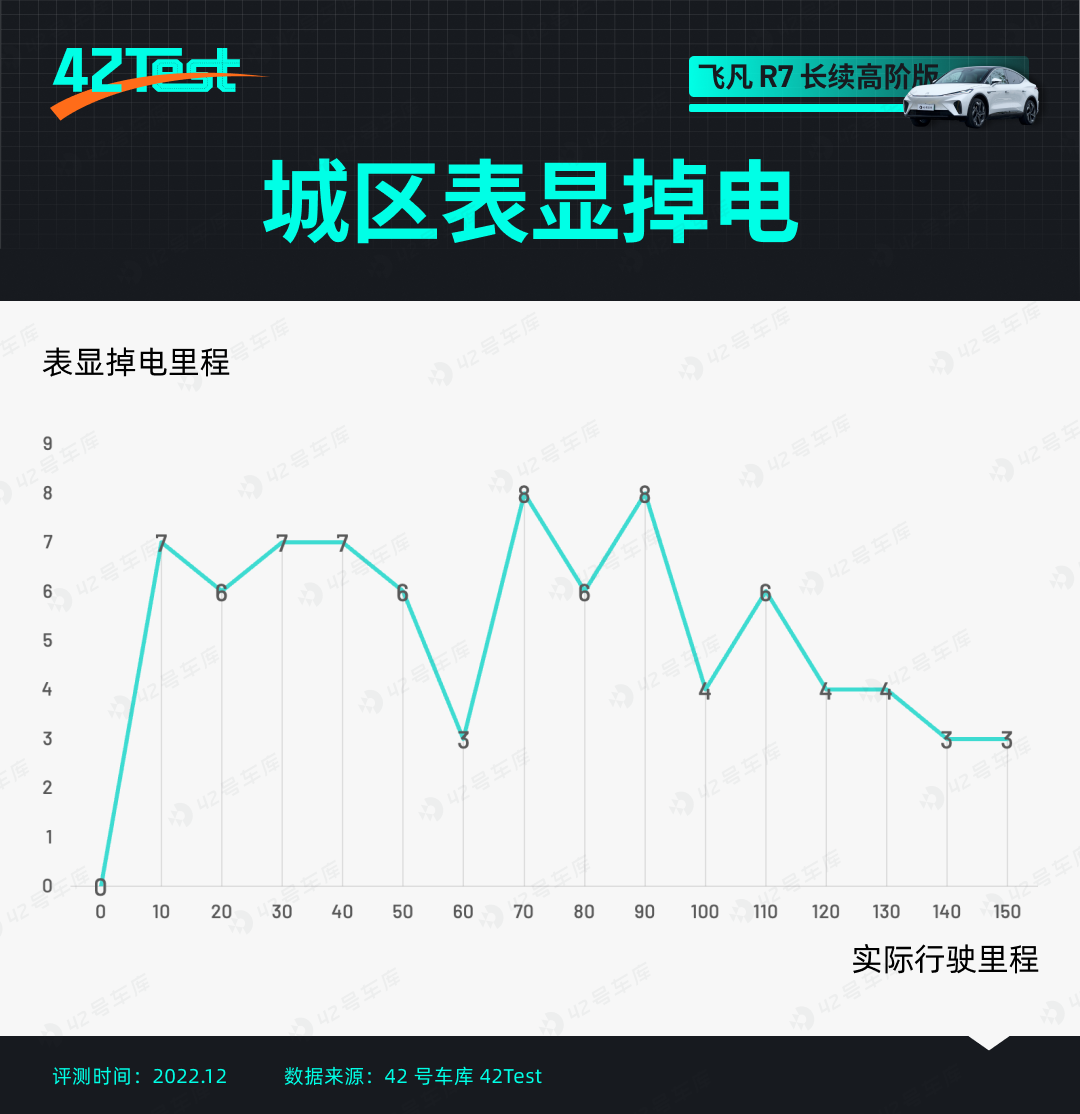
After completing the endurance test, we also tested the charging speed of the FF R7 with a 90 kWh battery, except for the base model, the other three models are equipped with a 90 kWh ternary lithium battery. The charging environment was still the Xiaojv 120 kWh charging station, starting from a battery level of less than 5%.
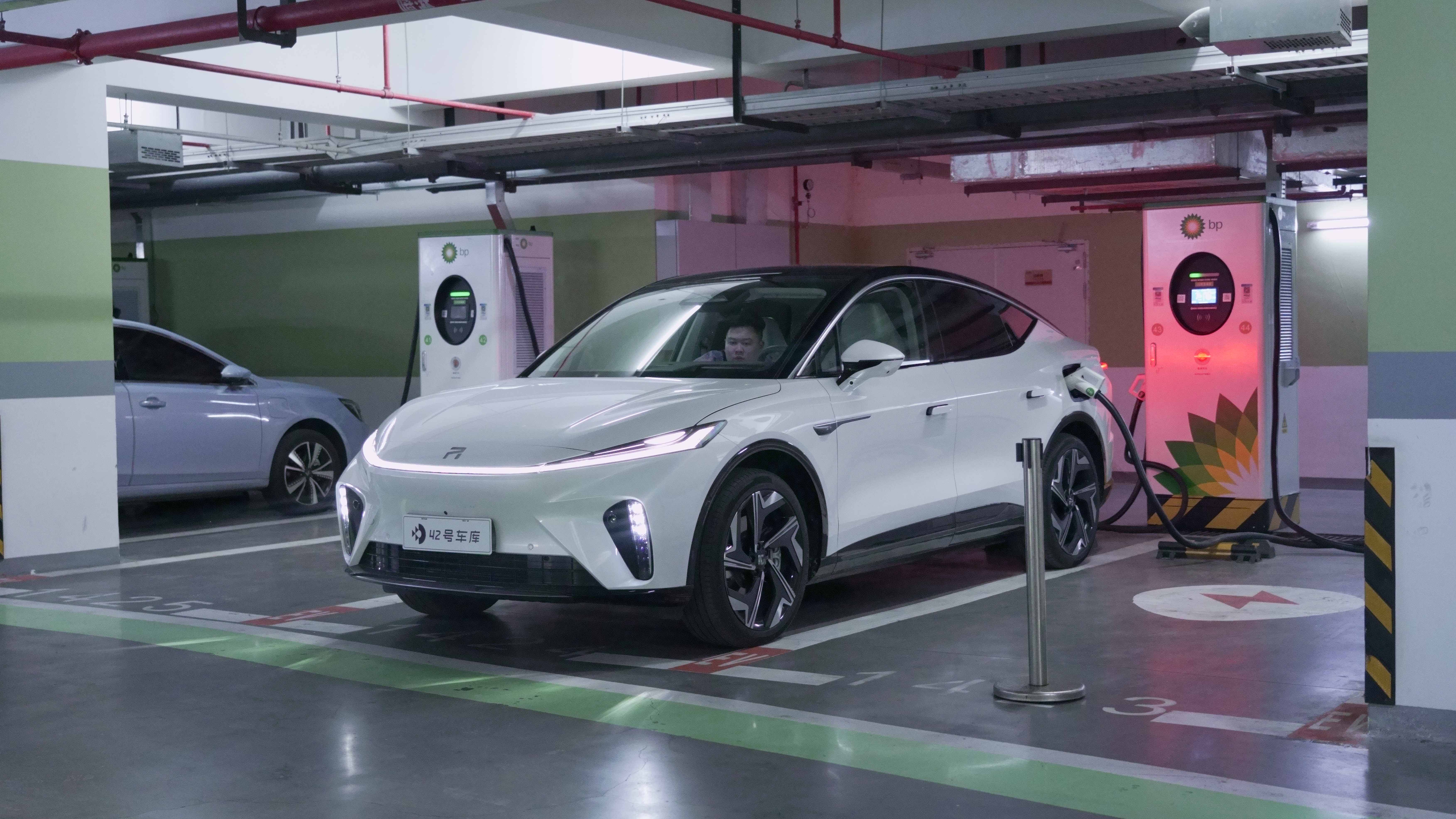
After actual testing, The FF R7 took 40 minutes to charge from 5% to 80%, and 57 minutes to charge from 5% to 95%. Under the same testing conditions, the charging speed of the FF R7 ranked second in our 42Test charging test list, only behind the XPeng G9, to be honest, this result surprised me as well.
 The starting charging voltage of the FEIFAN R7 is 397 V, which is relatively high among vehicles with 400 V voltage. Once the battery SOC exceeds 10\%, it can maintain a charging power of around 100 kW, and it can continue until 65\% when it reaches its peak power of 106 kW, and then gradually decreases until it drops to 16.2 kW at 95\%. This is sufficient to meet the daily charging needs of most users.
The starting charging voltage of the FEIFAN R7 is 397 V, which is relatively high among vehicles with 400 V voltage. Once the battery SOC exceeds 10\%, it can maintain a charging power of around 100 kW, and it can continue until 65\% when it reaches its peak power of 106 kW, and then gradually decreases until it drops to 16.2 kW at 95\%. This is sufficient to meet the daily charging needs of most users.
After 95\%, the charging power of FEIFAN R7 drops to only about 5.4 kW, which is even lower than that of a common 7 kW home charging pile. However, the benefit is that if you use a public charging pile at a shopping mall, the 5.4 kW charging power can give you some buffer time to get back to your car without paying a parking fee.
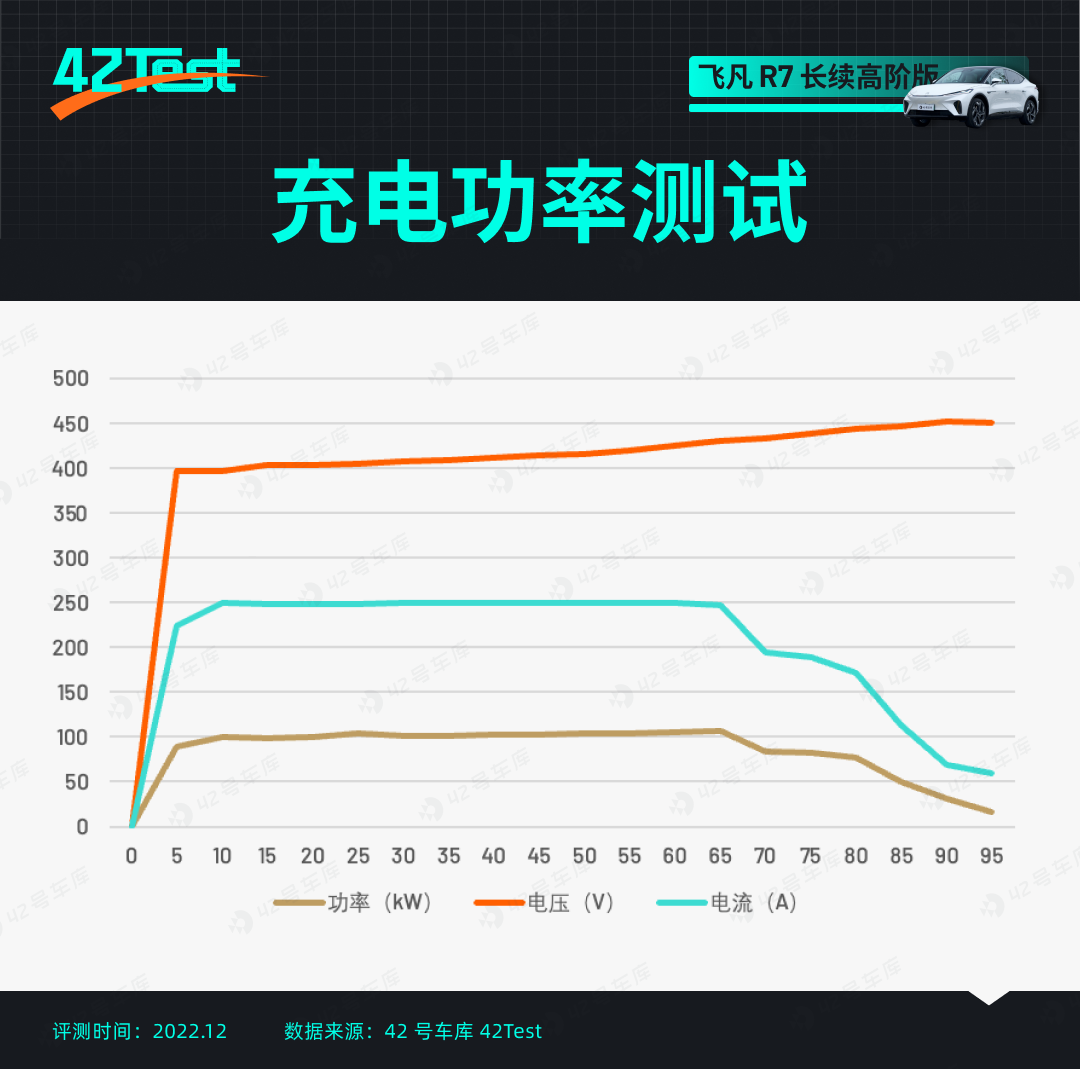
Moreover, FEIFAN R7 also provides battery swapping service. During the swapping process, it only takes 2.5 minutes for FEIFAN R7 to complete the swapping, and the small battery will not be disconnected during the entire process. You can use the in-car entertainment screen and fan. This is indeed more user-friendly.
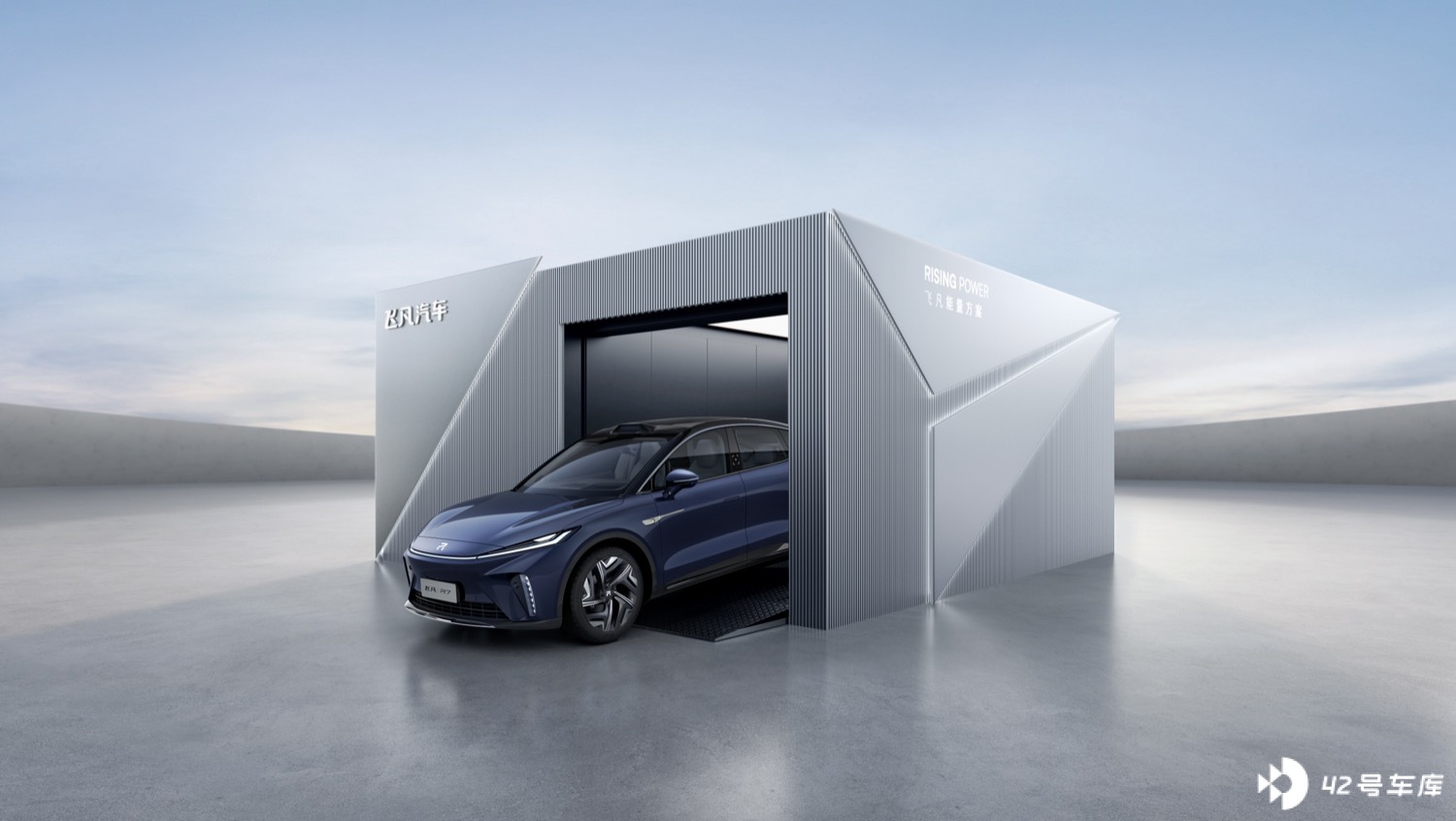
If you choose the battery separation service, you can save 84,000 yuan for the purchase of a 77 kWh battery, and 100,000 yuan for the purchase of a 90 kWh battery. To give an example of the high-performance version, the price is reduced to 226,900 yuan, and you only need to pay a monthly battery rental fee of 1,560 yuan. This can greatly reduce the pressure of purchasing a car. In addition, FEIFAN also provides the right to charge and swap 1,500 kWh of electricity for 2 years. If you have charging facilities available in your daily use of the car, it means that your battery swapping in the first two years is basically free.
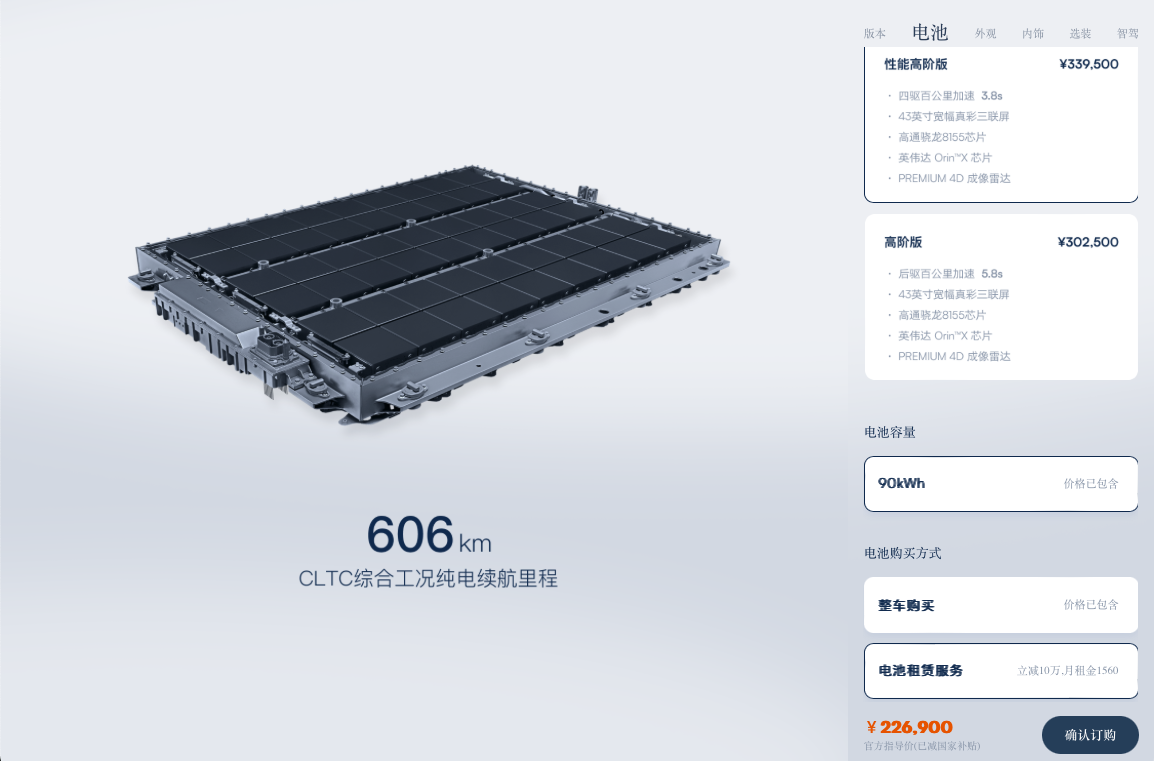
On the other hand, the number of swap stations is also crucial if you want convenient battery swapping. Currently, FEIFAN has cooperated with two Chinese oil giants, and we are looking forward to the future expansion of the network.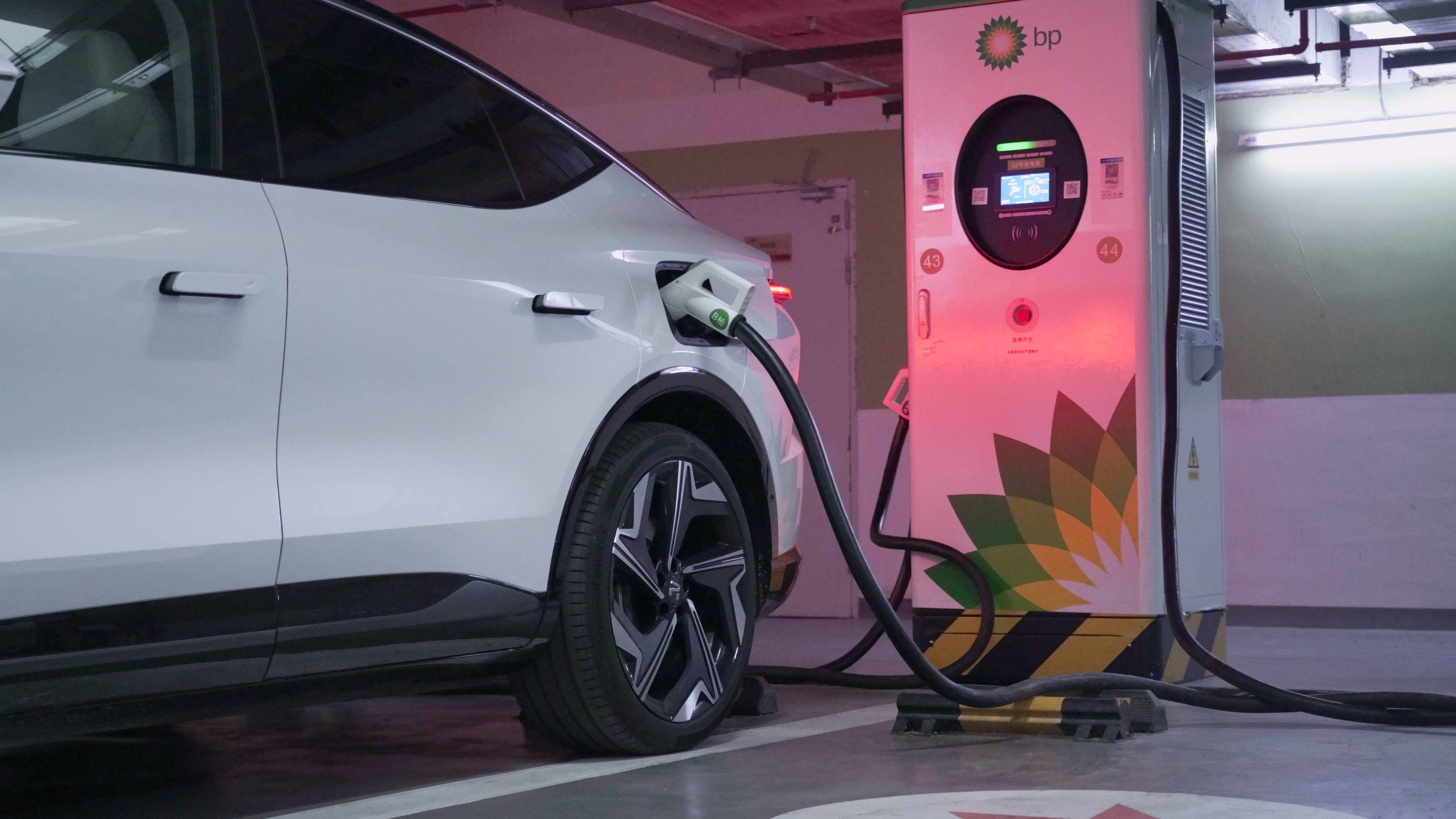
Looking at the aspects of endurance and charging, Flyren R7 with 400 kW power, won’t make you too anxious about energy consumption, endurance, and energy supplement. The average energy consumption is around 18 kWh/100 km, matched with 90 kWh battery, and can supplement energy once a week for daily use. The charging power is sufficient and sustainable and can even swap batteries. This experience has achieved good results at this stage.
Advanced Driving Assistance System (ADAS): How to choose?
When testing the Flyren R7 endurance, I also took the opportunity to experience the RISING PILOT ADAS. All models of Flyren R7 are equipped with 12 cameras, 12 ultrasonic radars, including 2 front view, 1 rear view with 8 million cameras, 1 PREMIUM 4D imaging radar from ZF, 4 point cloud corner millimeter wave radars, and 1 NVIDIA DRIVE Orin chip. This is exactly the configuration we experienced.
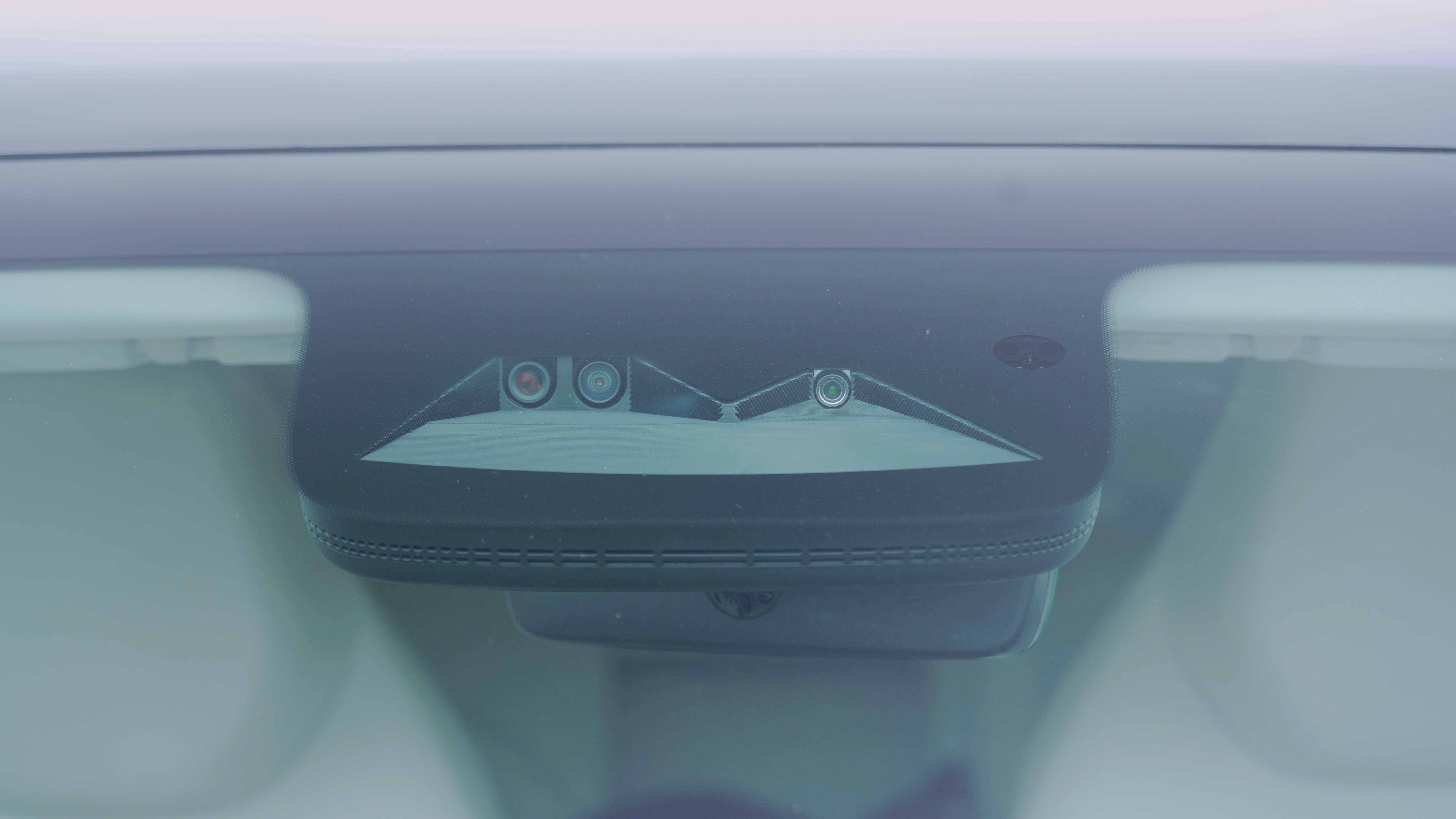
Users who have higher requirements for ADAS can also choose to install a LIDAR package worth RMB 20,000, which includes a 1,550 nm LUMINAR LIDAR, a 4D imaging radar, and an NVIDIA DRIVE Orin chip, which can be upgraded to two. Although the performance is powerful, the 4D imaging radar alone has performed relatively well for the time being.
In the high-speed scenario experience, with only the 4D imaging radar and front vision, Flyren R7 can recognize the preceding vehicle at a very long distance and gently brake based on the recognition distance. In high-speed cornering scenarios, Flyren R7 can also pass through very stably. Decisions to change lanes are made quickly. When the turn signal is turned on, once the rear is clear, it changes without any hesitation. However, in scenes where other vehicles cut in, Flyren R7 has a greater braking force and will reserve a longer safe distance, showing a more cautious performance overall. It is a trustworthy ADAS capability.
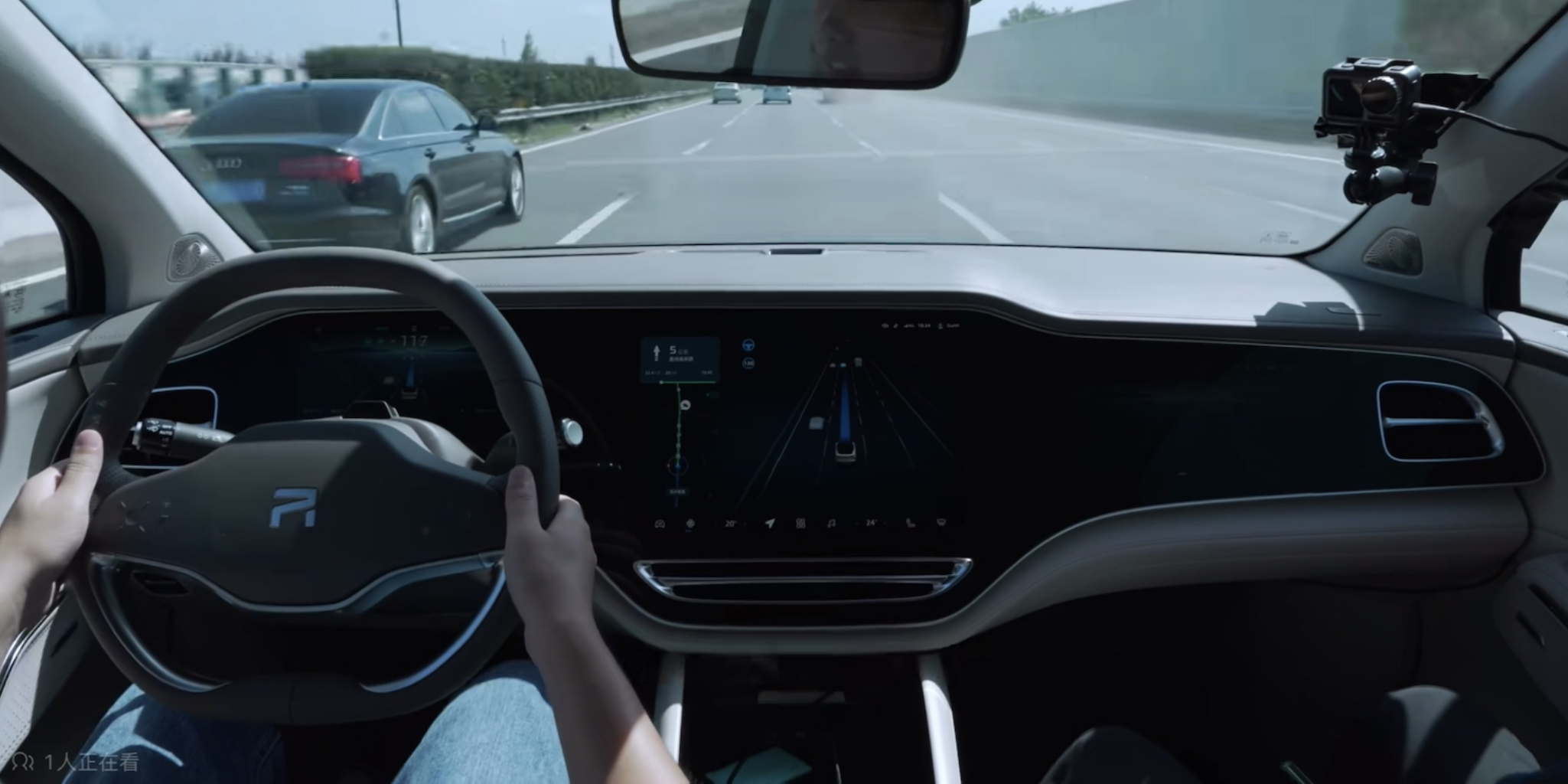 Moreover, customers who purchase a car before the end of the year will be able to receive a free RISING PILOT full fusion advanced intelligent driving system software package worth 30,000 yuan, including advanced navigation assistance for high-speed/city driving, valet parking, memory parking and intelligent summoning. For users who are interested in assisted driving, it is still very cost-effective to buy a FIYVAN R7 at this stage.
Moreover, customers who purchase a car before the end of the year will be able to receive a free RISING PILOT full fusion advanced intelligent driving system software package worth 30,000 yuan, including advanced navigation assistance for high-speed/city driving, valet parking, memory parking and intelligent summoning. For users who are interested in assisted driving, it is still very cost-effective to buy a FIYVAN R7 at this stage.
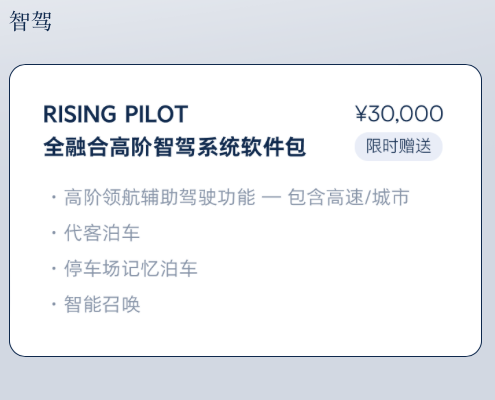
Regarding the specific performance of the navigation assistance system on the FIYVAN R7, you can look forward to our next issue of 42Mark’s comprehensive evaluation.
Conclusion
From the perspective of this year, the outbreak of the epidemic and the large-scale emergence of new energy products in the market have actually brought considerable challenges to the FIYVAN R7. After three days of actual experience, I believe that the FIYVAN R7 is highly competitive in the new energy vehicle market of 300,000 yuan, which is the most competitive market segment.
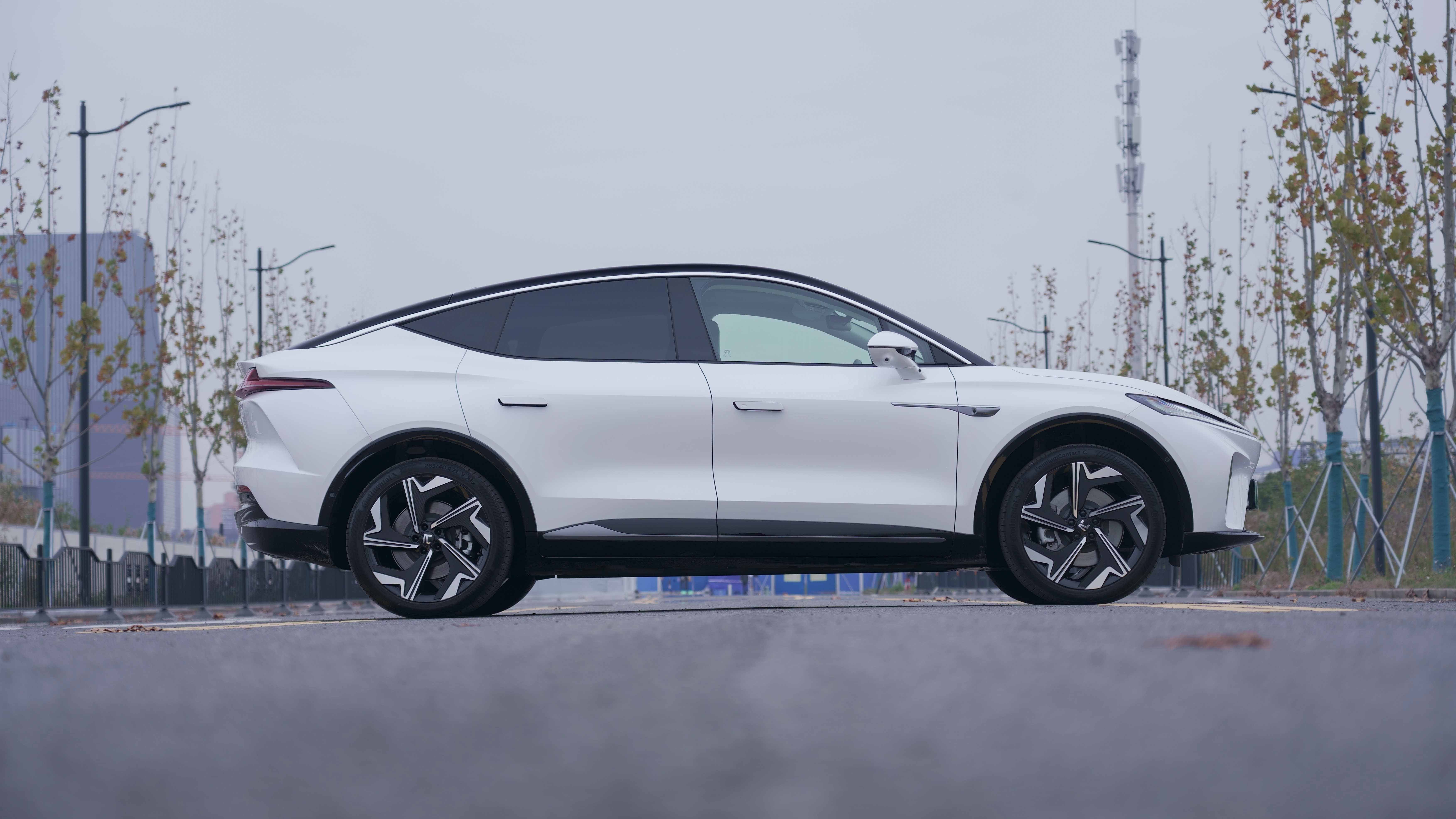
The strong competitiveness of the FIYVAN R7 lies in its sporty appearance, rich configuration, textured driving quality, excellent performance and cruising range, and rechargeable and replaceable energy supply. The combination of these features makes the FIYVAN R7 very competitive in the current market segment of 300,000 yuan, and more balanced, appropriate, and personalized when compared to the same level benchmark Model Y. The cockpit also has its own highlights compared to new forces, and performs more solidly in areas such as ergonomics and basic functionality, while also being more affordable.
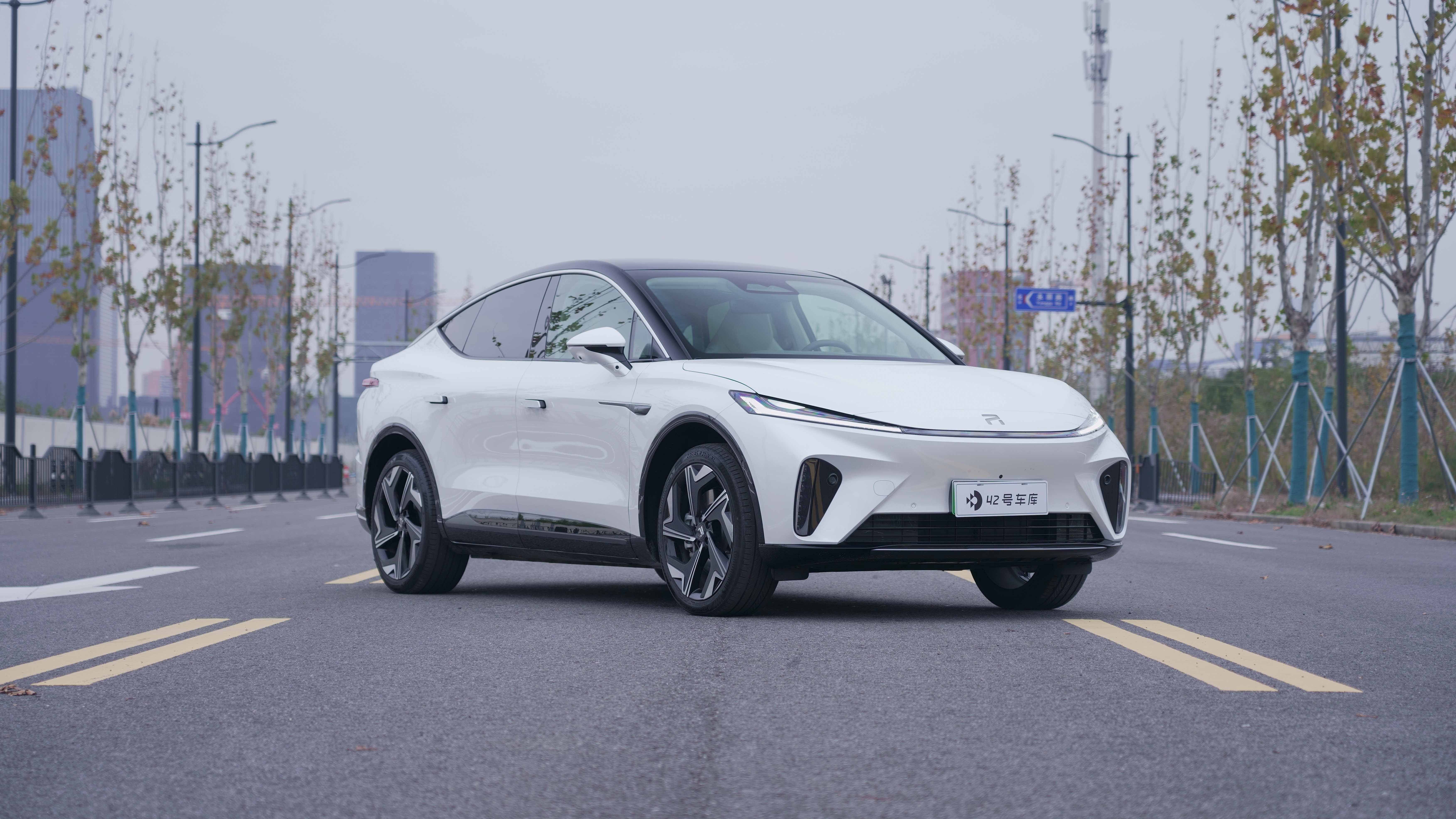
For young users today, personalized style, practicality, and cost performance are three important considerations when purchasing a car, and the 326,900 yuan FIYVAN R7 Performance High Version just meets the needs of this part of the user base. It not only meets the requirements of comfort and practicality for family use but also meets the requirements for driving quality. The intelligence and performance are the finishing touches of the FIYVAN R7 Performance High Version. In addition, with a post-subsidy price of 226,900 yuan for the battery replacement version and the gift of advanced intelligent driving functions for orders placed within the year, it also meets the needs of cost performance.The delivery result for the first month was 1,501 units. As policies gradually loosen up and people’s demand for private transportation increases, we are hoping for better market performance for the subsequent sales of Feeyo R7.
This article is a translation by ChatGPT of a Chinese report from 42HOW. If you have any questions about it, please email bd@42how.com.
